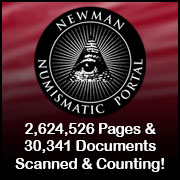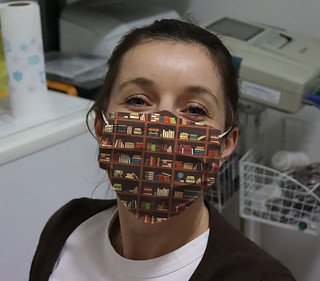
About UsThe Numismatic Bibliomania Society is a non-profit association devoted to the study and enjoyment of numismatic literature. For more information please see our web site at coinbooks.org SubscriptionsThose wishing to become new E-Sylum subscribers (or wishing to Unsubscribe) can go to the following web page link MembershipThere is a membership application available on the web site Membership Application To join, print the application and return it with your check to the address printed on the application. Print/Digital membership is $40 to addresses in the U.S., and $60 elsewhere. A digital-only membership is available for $25. For those without web access, write to: Charles Heck, Treasurer
AsylumFor Asylum mailing address changes and other membership questions, contact Chuck at this email address: treasurer@coinbooks.org SubmissionsTo submit items for publication in The E-Sylum, write to the Editor at this address: whomren@gmail.com BUY THE BOOK BEFORE THE COINSale Calendar
|
- WAYNE'S WORDS: THE E-SYLUM APRIL 19, 2020
- BUY OR BID SALE #12 CLOSES APRIL 20, 2020
- NEW BOOK: GUNMONEY, 2ND EDITION
- NEW BOOK: DEBASEMENT
- GLENNA GOODACRE (1939-2020)
- GLENNA GOODACRE HAS LEFT US
- AUDIO: EARLY U.S. MINT COPPER PLANCHETS
- VIDEO: VAN LOON MEDALS
- VIDEO: COLLECTOR WADE SPENCER INTERVIEWED
- ROYAL CANADIAN MINT RETOOLS FOR COVID-19
- CORONAVIRUS UPDATES: APRIL 19, 2020
- THE IMMEDIATE FUTURE OF COIN SHOWS
- QUIZ ANSWERS: NUMISMATIC MYSTERY ADDRESSES
- NOTES FROM E-SYLUM READERS: APRIL 19, 2020
- PENNSYLVANIA RAILROAD EMPLOYEE SPORT MEDALS
- NICKEL RASH RUMORS
- COINS AND POISON
- VOCABULARY TERMS: CLAD, CLADDING
- SAMUEL LEOPOLD KELLER (1862-1946)
- THE 1740 PHILADELPHIA HALFPENCE RIOT
- THE 1883 NICKEL RUSH
- PODCAST REVIEW: THE COINAGE ACT OF 1857
- ANA CELEBRATES WOMEN IN NUMISMATICS
- THE UNIQUE 1952 GEORGE VI PROOF PENNY
- WEIR FARM QUARTER: A NATIONAL PARK FOR ART
- GERMAN NOTGELD COINS
- GALAPAGOS ISLANDS COUNTERMARK ARTICLE AVAILABLE
- MORE ON THE ELUSIVE NEW ENGLAND COUNTERMARK
- DUKE OF NORMANDY PIGEON DICKIN MEDAL
- LORD ASHCROFT: GEORGE CROSS FOR HEALTH WORKERS
- THE ELEMENTARY, MY DEAR WATSON MEDAL
- THE RISE AND FALL OF THE VERMONT STATE BANK
- WILL CORONAVIRUS STIMULUS CHECKS BE COLLECTIBLE?
- TORNADO CARRIES OLD CHECK STUB 90 MILES AWAY
- THE CASE FOR ELECTRONIC CASH
- LOOSE CHANGE: APRIL 19, 2020
- FEATURED WEB SITE: COIN DATE CONVERTER
Click here to access the complete archive
Click here to unsubscribe (scroll down)
To comment or submit articles, reply to whomren@gmail.com
Content presented in The E-Sylum is not necessarily researched or independently fact-checked, and views expressed do not necessarily represent those of the Numismatic Bibliomania Society.
WAYNE'S WORDS: THE E-SYLUM APRIL 19, 2020
 New subscribers this week include: Daniel Fearon, courtesy of Chris Eimer; Eshel Kreiter, and Gary L Winters. Welcome aboard! We now have 6,121 subscribers.
New subscribers this week include: Daniel Fearon, courtesy of Chris Eimer; Eshel Kreiter, and Gary L Winters. Welcome aboard! We now have 6,121 subscribers.
Thank you for reading The E-Sylum. If you enjoy it, please send me the email addresses of friends you think may enjoy it as well and I'll send them a subscription (but let me know if they are located in the European Union). Contact me at whomren@gmail.com anytime regarding your subscription, or questions, comments or suggestions about our content.
This week we open with a reminder of the Kolbe & Fanning Buy or Bid sale, two new books, sculptor Glenna Goodacre and updates from the Newman Numismatic Portal.
Other topics this week include Van Loon medals, the future of coin shows, coins and poison, the coinage act of 1857, the 1883 nickel rush, the Weir Farm quarter, women in numismatics, notgeld coins, fantasy countermarks, the Dickin medal, and the collectibility of coronavirus stimulus checks.
To learn more about Irish Gunmoney, coinage debasement, the I Stayed Home pandemic medal, Barbara Gregory and The Numismatist, the Numista banknote catalog, the George III Recovery medal, the greatest swindle ever perpetrated, and the Philadelphia halfpence riot, read on. Have a great week, everyone!
Wayne Homren
Editor, The E-Sylum
BUY OR BID SALE #12 CLOSES APRIL 20, 2020
Here's a reminder that Kolbe & Fanning's Buy or Bid sale closes on April 20, 2020. -Editor
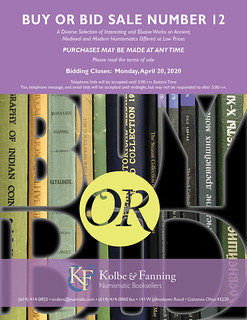 Kolbe & Fanning Numismatic Booksellers' twelfth "Buy or Bid Sale," closes Monday. Send your email bids to orders@numislit.com by 12:00 midnight Eastern Monday, April 20, 2020.
Kolbe & Fanning Numismatic Booksellers' twelfth "Buy or Bid Sale," closes Monday. Send your email bids to orders@numislit.com by 12:00 midnight Eastern Monday, April 20, 2020.
With hundreds of new additions, the sale focuses on modestly priced books, giving collectors an opportunity to add to their libraries at minimal cost. The sale includes over 1400 works on ancient, medieval and modern coins, as well as general works, periodicals and sale catalogues. "Buy" prices have been kept low to promote sales. To further encourage participation, the firm is offering free domestic shipping to bidders spending at least $300; there is also no packing and processing fee for this sale. Again, please read the Terms of Sale before participating.
As the name of the sale suggests, customers may bid on items they wish to acquire or buy them outright at the published price. The Terms of Sale will give full instructions on how to participate: please read it carefully.
There is no printed catalogue. The PDF catalogue is available now for downloading from the Kolbe & Fanning website at numislit.com. Please send all bids to orders@numislit.com or use the bid sheet included at the end of the PDF catalogue.
To read the earlier E-Sylum article, see:
KOLBE & FANNING BUY OR BID SALE NUMBER 12 (https://www.coinbooks.org/v23/esylum_v23n15a03.html)
THE BOOK BAZARRE
NEW BOOK: GUNMONEY, 2ND EDITION
Here's the announcement of the new edition of Phil Timmins' book on Irish Gunmoney. Thanks! -Editor
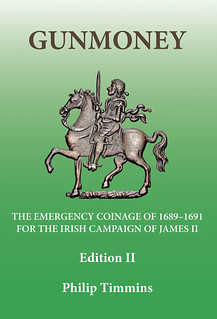 Gunmoney: The Emergency coinage of 1689-91 for the Irish Campaign of James II.
Gunmoney: The Emergency coinage of 1689-91 for the Irish Campaign of James II.
Edition II.
by Phil Timmins
We are pleased to announce the new publication of Edition II of Gunmoney by Philip Timmins. All dealers and collectors of Gunmoney will find this updated reference highly useful.
This book incorporates new features not included in the first edition. This includes a new layout with current prices for all variants together with a new chapter detailing the off-metal gunmoney coinage of the period. GUNMONEY is a scholarly publication written for collectors, dealers and students of Irish numismatics. The book is extensively illustrated and lists every denomination that was struck and their variants. Some varieties have never been published before.
The book is set out month by month, each of which begins with an account of that month's history of the campaign. It includes the coins mintage figures and details of the coins issued that month. The war diary is followed with a table and images of the variants which fully describe and illustrate all of the denominations struck in that month. The table of varieties sets out diameter, weight, orientation, edge type with reference number, rarity and an estimate of current prices. The table also includes remarks where necessary and the known off-metal coins associated with that month.
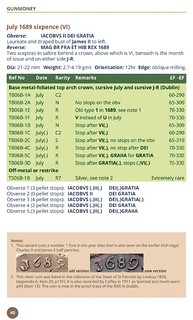
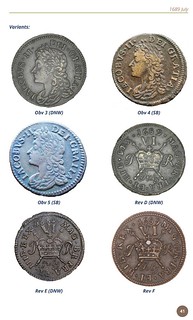
The tables are followed with a full page of each denomination struck that month with the variants cross referenced to the table.
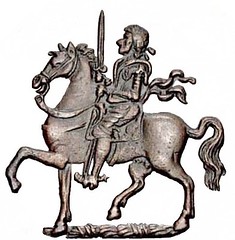 Gunmoney was issued at both Dublin and Limerick and varieties at each mint are identified in the book. There are also sections on the white metal coinage, off metal
coinage and the Hibernia coins of Limerick in 1691. This is an important book about Irish numismatics and it comprehensively addresses the Gunmoney series in a way never done
before. For easy reference the book includes a comprehensive index.
Gunmoney was issued at both Dublin and Limerick and varieties at each mint are identified in the book. There are also sections on the white metal coinage, off metal
coinage and the Hibernia coins of Limerick in 1691. This is an important book about Irish numismatics and it comprehensively addresses the Gunmoney series in a way never done
before. For easy reference the book includes a comprehensive index.
The author Philip Timmins has been interested in numismatics since his early 20s and for the past decade or so he has been studying and researching the Irish Gunmoney coinage. Over the years he has assembled a database of descriptions and illustrations of thousands of specimens which includes all the varieties in the book. During his research he has had access to important museum collections in order to take photographs and to verify details.
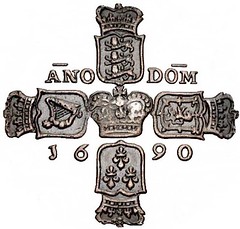 Illustrations
Illustrations
The book is extensively illustrated and all of the obverse and reverse images are enlarged to fully illustrate the different variants.
Description
Full colour hardback; 256p; 165x245mm; ISBN 978-1-83853-260-4. This second edition is printed on 115gsm gloss paper in full colour.
Citation
TIMMINS, P. (2020) GUNMONEY: The emergency coinage of 1689-1691 for the Irish campaign of James II.
GUNMONEY: The emergency coinage of 1689-1691 for the Irish campaign of James II is recommended as an essential reference for all numismatics libraries.
Ordering
Please contact Philip Timmins on timmins.phil@gmail.com with the ship to location and a full quote will be provided.
To read the earlier E-Sylum articles, see:
NEW BOOK: GUNMONEY (https://www.coinbooks.org/v21/esylum_v21n03a04.html)
BOOK REVIEW: GUNMONEY (https://www.coinbooks.org/v21/esylum_v21n07a04.html)
NEW BOOK: DEBASEMENT
The proceedings of a 2017 conference on the debasement of coinage during pre-modern times has now been published by Oxbow books. Here's information from the publisher's site. It is available as an ebook on Amazon as well. See also the CoinsWeekly article by Ursula Kampmann linked below. -Editor
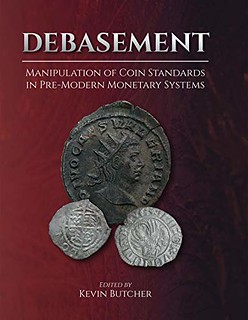 Debasement: Manipulation of Coin Standards in Pre-Modern Monetary Systems [Hardback]
Debasement: Manipulation of Coin Standards in Pre-Modern Monetary Systems [Hardback]
Kevin Butcher (Editor)
ISBN: 9781789253986
Published by: Oxbow Books
Year of Publication: 2020
Language: English
240p
H280 x W216 (mm)
b/w and colour
The debasement of coinage, particularly of silver, was a common feature of pre-modern monetary systems. Most coinages were issued by state authorities and the condition of a coinage is often seen (rightly or wrongly) as an indicator of the broader fiscal health of the state that produced it. While in some cases the motives behind the debasements or reductions in standards are clear, in many cases the intentions of the issuing authorities are uncertain. Various explanations have been advanced: fiscal motives (such as a desire to profit or a to cover a deficit caused by the failure to balance expenditure and revenues); monetary motives (such as changing demand for coined money or a desire to maintain monetary stability in the face of changing values of raw materials or labour costs); pressure from groups within society that would profit from debasement; misconduct at the mint; or the decline of existing monetary standards due to circulation and wear of the coinage in circulation.
Certain explanations have tended to gain favour with monetary historians of specific periods, partly reflecting the compartmentalization of scholarship. Thus the study of Roman debasements emphasizes fiscal deficits, whereas medievalists are often more prepared to consider monetary factors as contributing to debasements. To some extent these different approaches are a reflection of discrepancies in the amount of documentary evidence available for the respective periods, but the divide also underlines fundamentally different approaches to the function of coinage: Romanists have preferred to see coins as a medium for state payments; whereas medievalists have often emphasized exchange as an important function of currency.
The volume is inter-disciplinary in scope. Apart from bringing together monetary historians of different periods, it also contains contributions from archaeometallurgists who have experience with the chemical and physical composition of coins and technical aspects of production of base alloys.
For more information, or to order, see:
Debasement: Manipulation of Coin Standards in Pre-Modern Monetary Systems [Hardback]
(https://www.oxbowbooks.com/oxbow/debasement.html)
To read the CoinsWeekly article, see:
Debasement (https://coinsweekly.com/debasement/)
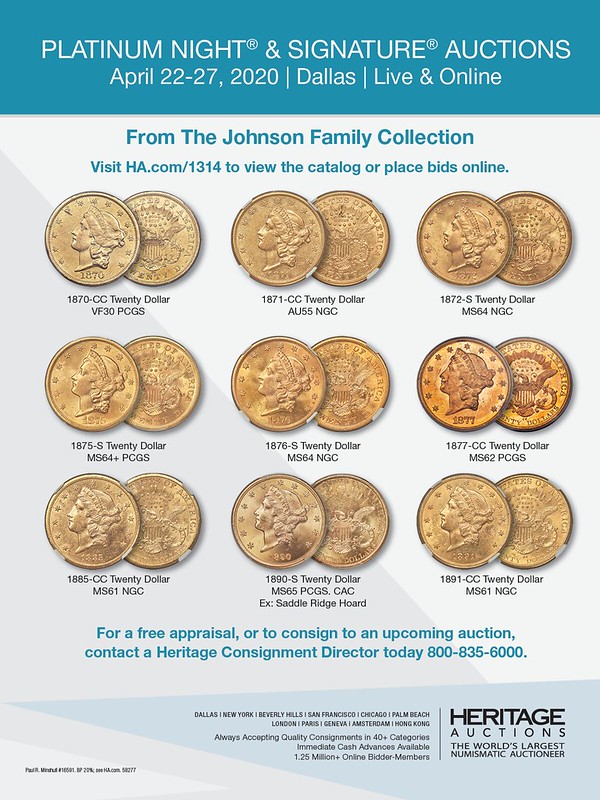
GLENNA GOODACRE (1939-2020)
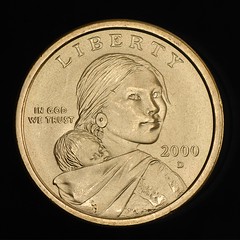
Sacagawea dollar designer Glenna Goodacre has passed. Thanks to Ben Hellings, Head of the Department of Numismatics Yale University Art Gallery for passing this news along. -Editor
Harry Connick Jr. shared sad news on social media this evening, saying his mother-in-law, Glenna Goodacre, passed away Monday night.
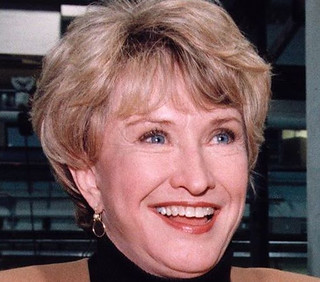 Glenna Maxey Goodacre was born on August 28, 1939 in Lubbock, Texas. She graduated from Monterey High School. She was a sculptor and designed the Sacagawea dollar, the
Vietnam Women's Memorial in Washington, D.C., a bronze of Ronald Reagan that greets visitors as you enter his presidential library and many of her bronze sculptures are featured
on the Texas Tech campus.
Glenna Maxey Goodacre was born on August 28, 1939 in Lubbock, Texas. She graduated from Monterey High School. She was a sculptor and designed the Sacagawea dollar, the
Vietnam Women's Memorial in Washington, D.C., a bronze of Ronald Reagan that greets visitors as you enter his presidential library and many of her bronze sculptures are featured
on the Texas Tech campus.
The City of Lubbock renamed a blvd. after her that runs through the Overton neighborhood across from Texas Tech University.
She is the mother of 1980s supermodel Jill Goodacre who is married to Harry Connick Jr.
Goodacre's father, Homer Glen Maxey was a prominent Lubbock builder, developer and was a part of the Lubbock City Council from 1956 to 1960. He graduated from Texas Tech University in 1931. Sources say he was the first president of the Red Raider Club.
To read the complete article, see:
Glenna Goodacre passes away at the age of 80
(https://www.kcbd.com/2020/04/14/glenna-goodacre-passes-away-age/)
Born in Lubbock, Texas, Goodacre was known mainly for her sculptures. Her work included the Irish Memorial in Philadelphia and the Sacagawea Dollar Coin.
She is survived by her husband, children and five grandchildren.
"She was warm, caring, funny, positive and driven," said her son, Tim. "She loved to encourage and support our adventures in life, especially travel, career and of course, artistic ambition. I was fortunate to be her son."
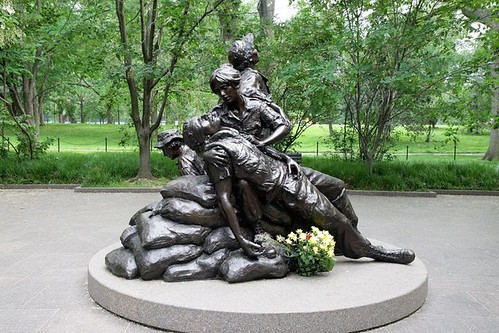
Vietnam Women's Memorial
To read the complete article, see:
Glenna Goodacre, Renowned Sculptor Who Created Vietnam Women's Memorial, Dead At
80 (https://www.huffpost.com/entry/glenna-goodacre-dead-artist_n_5e96c803c5b65eae709c79b0)
Here's an excerpt from a Washington Post article. -Editor
"I just plod along and do what I like to do — which are realistic figures," she told the Los Angeles Times in 1992. She had gone to art school when abstraction dominated, but she said she preferred figurative works and had little interest in pieces that could horrify or disturb. "I like art you can live with," she added.
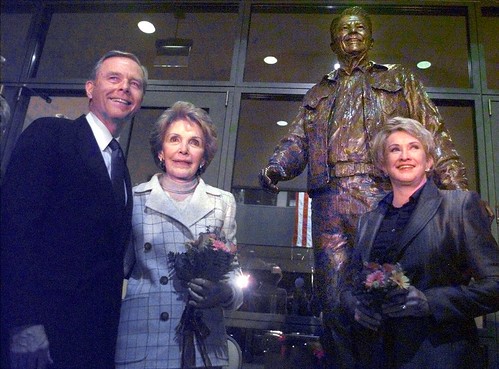
California Gov. Pete Wilson, Nancy Reagan and Ms. Goodacre in 1998
Her works include a 7-foot-6-inch sculpture of Ronald Reagan unveiled in 1998 at his presidential library in Simi Valley, Calif. — "I must have done the mouth over a hundred times," she said — and a 7-ton monument to the victims of the Irish famine, dedicated in Philadelphia in 2003. Stretching over 30 feet, the Irish Memorial features 35 life-size bronze figures, some starving in Ireland, others voyaging to the United States.
She studied painting and zoology at Colorado College, thinking that she might parlay her skills as an "accurate draftsman of frog guts" into a career as a medical illustrator. But after receiving her bachelor's degree in 1961, she married William Goodacre, a Canadian-born hockey player she met at school, and settled down to raise two children.
They settled in Lubbock, where Ms. Goodacre painted and sketched on the side before recommitting to art and studying at the Art Students League of New York in 1967. She had spent years resisting sculpture — a college professor told her she had no future in the discipline and gave her a D — but back in Texas, one of her friends, gallerist Forrest Fenn, handed her a hunk of wax and encouraged her to sculpt.
He went on to cast Ms. Goodacre's first work in bronze, a six-inch sculpture of her daughter in a ballerina costume that Ms. Goodacre carved with a bobby pin, paring knife and toothpick. (Fenn also became notorious for claiming he buried a cache of gold and jewels in the Rocky Mountains, setting off a treasure hunt that has claimed the lives of at least five people searching in the wilderness.)
While Ms. Goodacre had long cultivated a realistic style, she said she moved "toward less and less detail in sculpture" by the time she developed her proposal for the Vietnam memorial. In an interview for the 2002 book " ‘Let Me Tell You What I've Learned': Texas Wisewomen Speak," she recalled that while working on the sculpture, her chief assistant was focusing on the shoelaces of the boots, much to Ms. Goodacre's chagrin.
"She had them just perfect," Ms. Goodacre recalled. "Every time someone came in to see it, they would say, ‘Gosh it's so real. Just look at those shoelaces.' Well, after they had gone, I'd go mess up the shoelaces. I don't want people to look at the shoelaces. I want them to look at what the piece is trying to say — the feeling of it."
To read the complete article, see:
Glenna Goodacre, artist who sculpted Vietnam Women's Memorial, dies at 80
(https://www.washingtonpost.com/local/obituaries/glenna-goodacre-artist-who-sculpted-vietnam-womens-memorial-dies-at-80/2020/04/15/38b6cd1a-7f1d-11ea-9040-68981f488eed_story.html)
George Cuhaj passed along a video from a local Lubbock, TX station. Thanks. -Editor
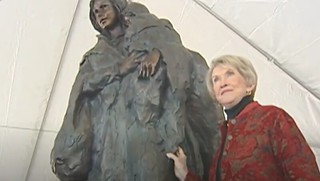 Two days after her death, members of the community remember the life of Glenna Goodacre, and the impact she made not only in Lubbock, but the world.
Two days after her death, members of the community remember the life of Glenna Goodacre, and the impact she made not only in Lubbock, but the world.
To watch the video, see:
Lubbock community remembers Glenna Goodacre (https://www.youtube.com/watch?v=YfqARTJJKlU)
Chris Fuccione passed along tbis CoinWeek piece. Thanks. -Editor
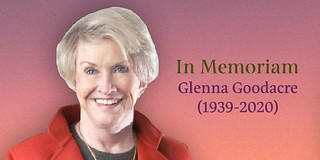 "The Sacagawea dollar does not get the respect it deserves," says Charles, "because to many people it symbolizes another failed dollar coin program. This is unfair. When
the Sacagawea dollar debuted in 2000, it heralded the possibility of a new era of American coinage. Goodacre's design was elegant, soft, and Sacagawea's forward gaze recalls that
imbued by Leonardo da Vinci on his most famous work, the Mona Lisa. Americans did not spend as many Sacagawea dollars as its advocates had hoped for – but looking at the other two
"golden dollar" coin programs that have followed, it's plain to see that our apathy towards the denomination had nothing to do with the Sacagawea coin's design and more to do with
our stubborn refusal to phase out the dollar bill."
"The Sacagawea dollar does not get the respect it deserves," says Charles, "because to many people it symbolizes another failed dollar coin program. This is unfair. When
the Sacagawea dollar debuted in 2000, it heralded the possibility of a new era of American coinage. Goodacre's design was elegant, soft, and Sacagawea's forward gaze recalls that
imbued by Leonardo da Vinci on his most famous work, the Mona Lisa. Americans did not spend as many Sacagawea dollars as its advocates had hoped for – but looking at the other two
"golden dollar" coin programs that have followed, it's plain to see that our apathy towards the denomination had nothing to do with the Sacagawea coin's design and more to do with
our stubborn refusal to phase out the dollar bill."
To read the complete article, see:
Glenna Goodacre, Designer of Sacagawea Dollar Coin: In
Memoriam (https://coinweek.com/people-in-the-news/in-memoriam/glenna-goodacre-designer-of-sacagawea-dollar-coin-in-memoriam/)
To read earlier E-Sylum articles, see:
SMITHSONIAN RECEIVES GLENNA GOODACRE'S SACAGAWEA DOLLAR MATERIALS
(https://www.coinbooks.org/esylum_v14n18a05.html)
SCULPTOR GLENNA GOODACRE TO RETIRE (https://www.coinbooks.org/esylum_v19n39a20.html)
GLENNA GOODACRE SCULPTURE AUCTION RESULTS (https://www.coinbooks.org/v20/esylum_v20n16a29.html)
ANA MUSEUM ACQUIRES GOODACRE DONATION (https://www.coinbooks.org/v21/esylum_v21n19a10.html)
GLENNA GOODACRE HAS LEFT US
Dennis Tucker of Whitman Publishing submitted these thoughts on Glenna Goodacre. Thank you. -Editor
Glenna Goodacre, Famous Sculptor and Coin Designer, Has Left Us
by Dennis Tucker
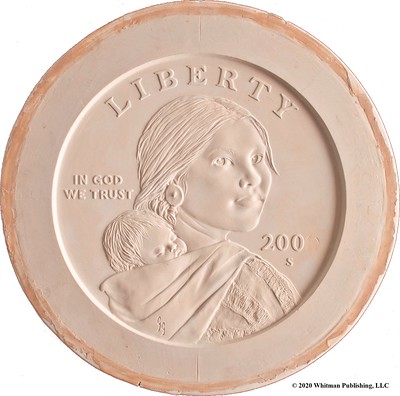 New Mexico artist Glenna Goodacre—well known to coin collectors as the designer of the Sacagawea dollar—has died of natural causes at the age of 80. She passed away at
her home in Santa Fe the evening of Monday, April 13, 2020.
New Mexico artist Glenna Goodacre—well known to coin collectors as the designer of the Sacagawea dollar—has died of natural causes at the age of 80. She passed away at
her home in Santa Fe the evening of Monday, April 13, 2020.
Goodacre was an artist of monumental sculptures including the Vietnam Women's Memorial (part of the national Vietnam Veterans Memorial), situated on the National Mall in Washington, D.C., and dedicated in 1993. Her Irish Memorial (2003), installed at Penn's Landing in Philadelphia, is a massive monument of 35 life-size sculptures dedicated to America's millions of Irish immigrants. Her delightful and energetic sculpture The Puddle Jumpers is in Montgomery, Alabama. The Smithsonian Art Inventory describes it: "Six running children, three boys and three girls, are preparing to jump into a puddle. The children are holding hands and are in various states of motion. Three of the figures are anchored to the ground, though all have the appearance of being suspended in air. The figures wear play clothes and are all smiling and laughing."
Goodacre's portraiture included a bronze statue of Ronald Reagan, After the Ride, displayed at his Presidential Library in California. She created a full-length figure of ragtime composer Scott Joplin, a striding depiction of General Dwight D. Eisenhower, and many other impressive sculptural portraits.
To numismatists, however, Glenna Goodacre will forever be remembered in the popular Sacagawea dollar, the first "golden dollar" of the United States Mint. Her design for the coin's obverse features Shoshone Indian interpreter and guide Sacagawea, who helped explorers Meriwether Lewis and William Clark on their famed journey westward from the Great Northern Plains to the Pacific Ocean. She depicted Sacagawea carrying her infant son Jean Baptiste, known as "Pomp." The figures were from Goodacre's creative imagination, as no contemporary portraits of the subjects are known to exist.
Goodacre's design was central to the Sacagawea dollar coin issued from 2000 to 2008 (with an eagle-in-flight reverse design by Thomas D. Rogers Sr.). Since 2009 it has been the obverse of the Native American series of dollar coins, issued annually with a new theme on the reverse each year.
The artist received $5,000 for her work on the new dollar, in the form of 5,000 specially burnished and surface-treated coins—a format unexpected by her and unannounced in advance. Q. David Bowers, the "Dean of American Numismatics," describes the unusual payment, which proved to be a bonanza: "At the time the Mint was having some problems with discoloration, and [this burnishing] was the way to prevent that from happening with coins that no doubt would be given away or otherwise distributed by Goodacre, rather than being spent. . . . These were delivered to her Santa Fe, New Mexico, studio by Mint Director Philip Diehl accompanied by two Mint police officers. A special ceremony was held there on April 5, 2000." The coins were slabbed and graded with special labels, with Goodacre keeping 2,000 for herself and the rest being sold.
Bowers, a longtime fan of Goodacre's, who wrote extensively on her work in the Guide Book of Modern United States Dollar Coins, remembers the artist with this tribute:
"The numismatic community regrets the passing of sculptor Glenna Goodacre. Her creativity will live forever with her design of the Sacagawea "golden dollar," the portrait of which is still being used for new issues. While over the years most coin designs have had their share of critics, not so with the Sacagawea dollar. Everyone loves it! As a side note, millions have circulated as money in Ecuador (which uses American dollars as currency). Many citizens there think the portrait is of an Ecuadorian child. Today, the Sacagawea dollar varieties are very affordable, and I suggest that there is room in every collection for a nice group of these."
Jeff Garrett, a professional numismatist and senior editor of the Guide Book of United States Coins, recalls meeting Goodacre. Garrett enjoyed the honor of helping her sell her coins:
"We are all saddened by the news of Glenna Goodacre's passing. She was known throughout the numismatic community for her iconic design of the Sacagawea dollar. We met in 2010, when I was asked to dispose of her remaining "special issue" 2000 coins. Glenna was one of the most successful female sculptors of all time. The country has lost an amazing artist and a wonderful person."
Robin Salmon, Brookgreen Gardens's vice president of Art and Historical Collections and curator of Sculpture, and currently a member of the Citizens Coinage Advisory Committee, which reviews American coin designs, describes Goodacre as "a remarkable woman and a good friend who never met a stranger. Her artwork continues on as powerful testimony to her love of family and the beauty of the human spirit."
Greg Weinman, senior legal counsel at the United States Mint, who worked closely with Goodacre during the design and launch of the Sacagawea dollar, also remembers the artist as "a good friend and one of my favorite people in the world."
The numismatic community joins Glenna Goodacre's family, friends, and many fans in mourning her loss and celebrating her art.

AUDIO: EARLY U.S. MINT COPPER PLANCHETS
The latest CoinWeek podcast features EAC President Bill Eckberg on how the U.S. Mint acquired copper for early U.S. cents and half cents. Check it out! -Editor
This week on the CoinWeek Podcast, Early American Coppers (EAC) President Bill Eckberg joins us to talk about how the United States Mint acquired its copper for early US cents and half cents and how the journey from England to America might have impacted the quality of the coins struck during this period.
CoinWeek Editor Charles Morgan asks Bill to give his insights into how long early US copper coins truly circulated and whether it makes sense today for collectors to pursue early copper cents and half cents that have been net graded.
It's an informative half hour spent with one of the hobby's leading experts on early United States copper coins. You won't want to miss it!
To listen, see:
CoinWeek Podcast #133: Early US Copper Planchets (with Bill Eckberg)
(https://coinweek.com/us-coins/coinweek-podcast-133-early-us-copper-planchets-with-bill-eckberg/)
To read the earlier E-Sylum article, see:
AUDIO: STACK'S AT 57TH STREET (https://www.coinbooks.org/v23/esylum_v23n14a05.html)
VIDEO: VAN LOON MEDALS
The latest addition to the Newman Numismatic Portal is a video on Van Loon medals. Project Coordinator Len Augsburger provided the following report. -Editor
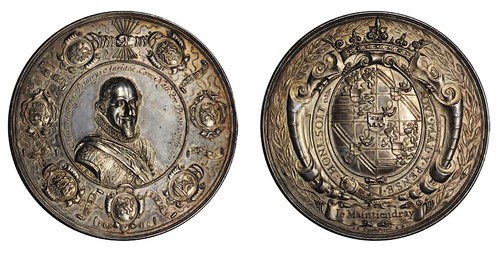
Van Loon Medals at the New York International Show
Recently added to NNP is a group of videos produced by David Lisot, covering four major shows from early 2020 (FUN, New York International, Spring ANA, and Long Beach). The New York International featured a presentation by Andrew E. Absil of Schulman b.v. Amsterdam on the subject of Van Loon medals related to the Eighty Years' War. David Menchell introduced Absil at the Medal Collectors of America (MCA) meeting held on January 16, 2020 at the New York show.
The Eighty Years' War (1566-1648), pitting the low countries against Phillip II of Spain, resulted in an independent Dutch state, leading to the rise of the Dutch colonial empire. Undercurrents of religious difference (Spanish Catholics vs. Calvinist Protestants in the Netherlands) played a role throughout the conflict. Dutch independence was concluded with the 1648 Peace of Munster.
The history of medals tends to be the history of war, and the Eighty Years' War resulted in a host of medallic tributes. Absil provides an overview of these historic pieces as cataloged by van Loon (1683-1758), who documented these, and many other contemporary medals, in a four-volume set published between 1723 and 1731. A popular French edition followed, from 1732 to 1737. Sets of these works are highly prized today and valued in the four-figure range. John W. Adams summed it up in the December 2009 Medal Collectors Advisory: "As a reference work, ‘van Loon' deserves its reputation for meticulous line drawings, accurate legends (and translations), well-described devices and copious historical support. A numismatic library that does not have a set of van Loon is not, simply put, a numismatic library."
Illustrated here is the 1624 Maurice Prince of Orange medal, commemorating a Dutch naval victory over Spain off the Peruvian and Brazilian coasts.
Image: 1624 Maurice Prince of Orange, Van Loon vol. 2:155. From Stack's Bowers Rarities Night, 8/9/2012, lot 11116, realized $12,925.
Link to video Van Loon Medals Relating to the 80 Year War in the Netherlands:
https://nnp.wustl.edu/library/book/581573
Link to the David Lisot Video Library on Newman Portal:
https://nnp.wustl.edu/library/multimediadetail/522852
Link to Medal Collectors Advisory (December 2009):
https://nnp.wustl.edu/library/publisherdetail/510765?Year=2009&displayAmt=50
VIDEO: COLLECTOR WADE SPENCER INTERVIEWED
These are selections from the David Lisot Video Library that feature news and personalities from the world of coin collecting. David has been attending coin conventions since
1972 and began videotaping in 1985. The Newman Numismatic Portal now lists all David's videos on their website at:
https://nnp.wustl.edu/library/multimediadetail/522852
Here's one interviewing pattern collector Wade Spencer. -Editor
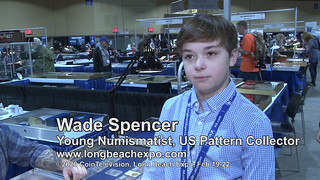 Thirteen Year Old Collector Likes Pattern US Coins.
Thirteen Year Old Collector Likes Pattern US Coins.
VIDEO: 2:13.
Wade Spencer, Young Numismatist, David Lisot, Interviewer, CoinTelevision.com.
Age is not a problem for being interested in coin collecting. Hear from this 13 year young numismatist about the virtues of numismatics. His perspective and collecting interests will surprise you!
An excerpt of the video is available for viewing on the Coin Television YouTube Channel at:
https://youtu.be/TYwf0v6uJsk
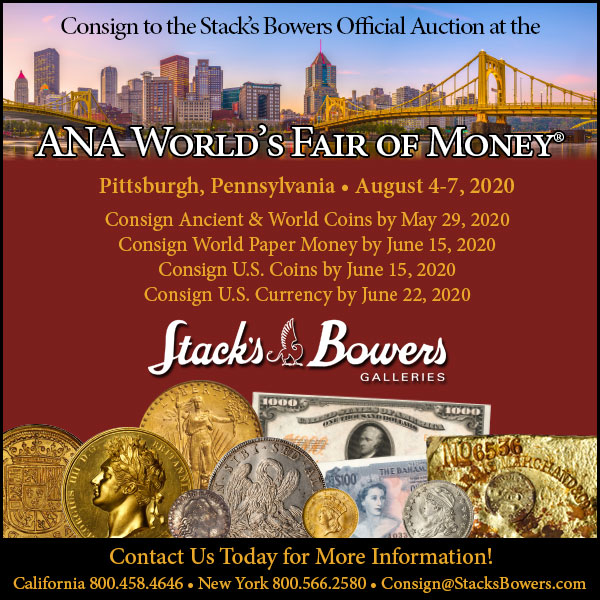
ROYAL CANADIAN MINT RETOOLS FOR COVID-19
A couple weeks ago the Royal Mint announced that it has retooled to make medical visors. Now the Royal Canadian Mint is making visors too, as well as hand sanitizer. Here's an excerpt from a National Post article. -Editor
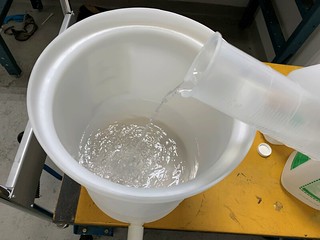 On April 2, five employees from the Royal Canadian Mint in Ottawa left their homes in search of every bottle of hydrogen peroxide they could get their hands on.
On April 2, five employees from the Royal Canadian Mint in Ottawa left their homes in search of every bottle of hydrogen peroxide they could get their hands on.
Stopping at Walmart and Costco locations all around the capital, they found 44 litres of the chemical, which was enough for the Mint to move forward with something it hasn't done since the Second World War: retool.
During the World Wars, while Canadians fought overseas, the Mint pumped out dial-sights, brackets of eyepieces for large guns and military medals.
Now in a new generational fight, the facility is producing hand sanitizer and face shields to battle COVID-19.
"When we heard there was a shortage of sanitizer for hospitals and the broader public sector, R&D looked at it and said, ‘We can do this.' From that point on, it all snowballed," said Scott Ingham, senior director of Ottawa Manufacturing for the Mint.
Since the middle of March, the federal institution has put its numismatic – or collectible – coin operations on pause. That freed up a lot of production capacity, ultimately making it possible to rethink how some of its equipment and material could be used to help fight the COVID-19 pandemic.
So the R&D and engineering teams took a look at possible recipes for hand sanitizers, and realized that one recipe published by the World Health Organization only requires three ingredients: isopropyl alcohol, hydrogen peroxide and glycerol.
Better yet, the Mint already has a significant amount of isopropyl alcohol, which is used to clean the surface of coins before they are stamped. So all the procurement team needed to do was order the two others to get things started.
Simple, right? Wrong.
While the shipment of glycerol arrived without a hitch, the hydrogen peroxide was coming from the United States and, weeks later, has yet to be allowed to cross the border.
"That hydrogen peroxide getting stuck at the border was a problem, and that was the day or the day after that (U.S. president) Donald Trump had announced that it was going to be America First" for medical equipment, said the Mint's director communications, Alison Crawford.
"So a bunch of us decided to go out and find out how much we could find in the community," she said. "I went to my local Walmart, walked up to the customer service desk and […] explained what we were doing at the Mint. The woman left her desk, walked me to the pharmacy, and said I could take as much as I want and that I could come back for more."
The Mint is also making plastic visors and masks using 3D printers. -Editor
To read the complete article, see:
https://nationalpost.com/news/canada/from-gold-coins-to-plastic-shields-and-hand-sanitizer-royal-canadian-mint-retools-to-join-battle-against-covid-19
(https://nationalpost.com/news/canada/from-gold-coins-to-plastic-shields-and-hand-sanitizer-royal-canadian-mint-retools-to-join-battle-against-covid-19)
To read the earlier E-Sylum article, see:
ROYAL MINT RETOOLS TO MAKE MEDICAL VISORS (https://www.coinbooks.org/v23/esylum_v23n13a13.html)
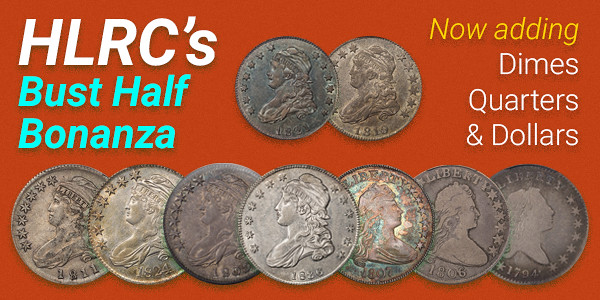
CORONAVIRUS UPDATES: APRIL 19, 2020
Here's another compilation of coronavirus updates from readers and companies. -Editor
Jon Sullivan, Land O Lakes, Florida (April 2, 2020)
In a recent blog post, error coin dealer Jon Sullivan writes:
 "Although the Coronavirus has left many of us working from home, or working with restrictions, it is great to see that the coin collecting community and the dealers
are for the most part, fairly close to "business as usual." Of course, these restrictions make it more difficult to do simple things like delivering mail to the post
office, or interacting with customers or other dealers in person (coin shows are shut down across the United States, for example), the internet is a thriving place for collectors
and dealers. With a few clicks, photos and prices can be sent to customers, and with Pay Pal payments can be made. The USPS and other mail services are still running, and will
continue to, and so shipments can be both sent and received. So although things are more difficult, it's still a thriving marketplace and community of collectors and dealers.
We hope all out customers stay safe, and we look forward to helping you do some work building or collection (even if it's just through phone calls and the internet!)
"Although the Coronavirus has left many of us working from home, or working with restrictions, it is great to see that the coin collecting community and the dealers
are for the most part, fairly close to "business as usual." Of course, these restrictions make it more difficult to do simple things like delivering mail to the post
office, or interacting with customers or other dealers in person (coin shows are shut down across the United States, for example), the internet is a thriving place for collectors
and dealers. With a few clicks, photos and prices can be sent to customers, and with Pay Pal payments can be made. The USPS and other mail services are still running, and will
continue to, and so shipments can be both sent and received. So although things are more difficult, it's still a thriving marketplace and community of collectors and dealers.
We hope all out customers stay safe, and we look forward to helping you do some work building or collection (even if it's just through phone calls and the internet!)
We have had a very nice run of major and also less expensive errors lately, which are mostly up on the website (although there is still a quantity of fresh inventory coming down the pipe, which will be listed over the next month or so.) "
To visit Jon's web site, see:
https://www.sullivannumismatics.com/
Professional Coin Grading Service (April 15, 2020)
In a Press Release PCGS President Brett Charville writes:
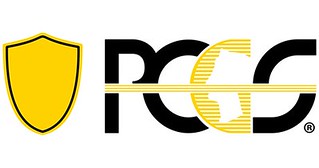 "Today we're happy to announce that PCGS is re-opening the operations of our Orange County, California office.
"Today we're happy to announce that PCGS is re-opening the operations of our Orange County, California office.
"Due to the liquidity we provide to numismatic trading markets worldwide, PCGS is essential and able to operate as needed during the current global pandemic. However, out of an abundance of caution for both our employees and customers, we took a measured and responsible approach and briefly closed our offices. During our temporary closure, we developed and implemented an ongoing safety plan that ensures the well-being of both employees and customers alike. It was only then, along with the commitment of our team, that we chose to reopen our doors."
U.S. Mint (April 15, 2020)
As PCGS opened up, the Mint shut down West Point. -Editor
 The clamor for retail investors to get hold of precious-metals coins is about to get more urgent.
The clamor for retail investors to get hold of precious-metals coins is about to get more urgent.
The U.S. Mint said Wednesday it's temporally halting production at its West Point facility in New York because of the risk to employees from the coronavirus. The site makes gold, silver, platinum and palladium coins which are sold through a network of distributors.
The shutdown comes as convulsive swings in financial markets spur a surge in demand among retail investors for precious metals as haven assets. Last month, the Mint said it sold out of American Eagle silver coins, while the gold coins it offers were snapped up in March at the fastest pace in over three years.
"The timing is awful," said Everett Millman, a precious-metals specialist at Gainesville Coins in Florida. "It's going to exacerbate the supply shortage" in the coin market when demand is soaring.
Premiums for gold coins are at 5%-10% over spot gold, compared with less than 1% in normal circumstances, Millman said.
The Mint had previously redirected some silver bullion production to its Philadelphia facility, Michael White, a spokesman, said in an email. During the temporary suspension of operations at the West Point facility, it will continue to make American Eagle and America the Beautiful silver bullion coins available to its network of authorized purchasers. American Eagle and American Buffalo gold coins will not be available, White said.
To read the complete article, see:
U.S. Mint Plant Halts Gold Coin Output Just as Demand
Is Surging (https://www.bloomberg.com/news/articles/2020-04-15/u-s-mint-halts-coin-output-just-as-investors-are-demanding-more)
IPMS 2020 Postponed Indefinitely (April 16, 2020)
LFK Tradeshows of Overland Park, KS is run by Lyn Knight Doug Davis, and Joel Shafer. On Thursday they announced the indefinite postponement of this year's International Paper Money Show. -Editor
"We have determined that we are forced to cancel the 44th annual IPMS show scheduled for June 10-13 in Kansas City, Missouri at the Sheraton Crown Center Hotel and Convention Center.
"We are providing written notification to the hotel today, April 16th, so our room block will be cancelled, and cancellations of rooms can begin. The Sheraton has been working well with us during this tricky time, but they understand that no one much wants to get on a flight or be subject to quarantine before leaving or arrival. Let's stay close to home and remain safe and healthy.
"We are currently working on the auction catalogs (online only) and other events and offerings we can do through our online platforms.
"I have not given up on the possibility for holding an event later in 2020, but we are working on a 2021 date in Las Vegas within our early summer time frame.
"We are saddened by the cancellation, but we have a renewal spirit for 2021 IPMS."
Pobjoy Mint, England (April 17, 2020)
The Pobjoy Team writes:
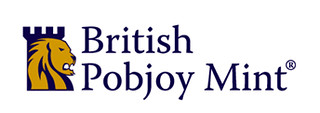 "As of today, we have minimal staff who have returned to the Mint in order to begin the process of dispatching outstanding orders for the 5th Hercules as well as
orders for other coins. We have put measures in place to maintain social distancing to minimise risk to health and well being of all during the COVID-19 outbreak, this means
response times will be longer than normal.
"As of today, we have minimal staff who have returned to the Mint in order to begin the process of dispatching outstanding orders for the 5th Hercules as well as
orders for other coins. We have put measures in place to maintain social distancing to minimise risk to health and well being of all during the COVID-19 outbreak, this means
response times will be longer than normal.
"Please bear with us as we are working hard on being able to dispatch your orders as well as keeping our staff safe. We would also like to make our customers aware that the delivery of orders via Royal Mail is delayed. We found the vast majority of orders shipped before we closed took between 7 - 10 days to arrive. This is considerably longer than normal and we ask for your patience with delivery times as many of the postal services are following advice from the Public Health Authority.
"Please note, that our phone lines are still closed for the next few days whilst we focus on dispatching orders but they will be open again soon and emails and Facebook messages will be responded to but will still have a delayed response time. "
Computer Catches CORONAvirus
Richard Jewell's computer has a virus... -Editor
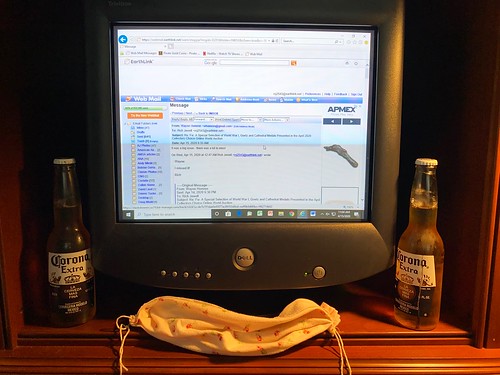
The Word on Everyone's Lips
Ron Haller-Williams writes:
"Nearly 67 years ago, the word CORONAtion was on everybody's lips here - now its place has been taken by CORONAvirus."
I Stayed Home Pandemic 2020 Medal
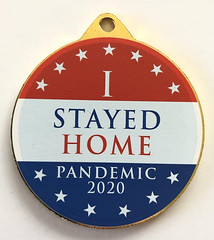
You deserve a medal! Get yours here. -Editor
For more information, or to order, see:
Pandemic 2020 Keepsake Medal, Stay Home Club, Quarantine Gift
(https://www.etsy.com/listing/793070453/pandemic-2020-keepsake-medal-stay-home)
Quarantine Thoughts
Dave Schenkman forwarded these quarantine thoughts... Thanks. -Editor
• I don't think anyone expected that when we changed the clocks we'd go from Standard Time to the Twilight Zone
• I used to spin that toilet paper like I was on Wheel of Fortune. Now I turn it like I'm cracking a safe.
• My body has absorbed so much soap and disinfectant lately that when I pee it cleans the toilet.
• Better 6 feet apart than 6 feet under
Here are a few more I saw in the Good Clean Funnies email. Thanks. -Editor
• Me: Alexa, what's the weather this weekend?
Alexa: It doesn't matter... you're not going anywhere.
• Quarantine has turned us into dogs. We roam the house all day looking for food. We are told "no" if we get too close to strangers. And we get really excited about car rides.
• This virus has done what no woman had been able to do... cancel all sports, shut down all bars, and keep men at home!!!
• When this is over... what meeting do I attend first... Weight Watchers or AA?
Librarian Mask
For more information, or to order, see:
Teacher Librarian Mask (https://www.goodvibes.gift/TC-D-17042023-NQ-Teacher-Librarian)
To read the earlier E-Sylum article, see:
CORONAVIRUS UPDATES: APRIL 12, 2020 (https://www.coinbooks.org/v23/esylum_v23n15a18.html)

THE IMMEDIATE FUTURE OF COIN SHOWS
In this week's In The Loupe email newsletter E-Sylum supporter Harry Laibstain reflects on the current state of the coin market and the future of coin shows. With permission we're publishing this lightly edited version. Thanks. -Editor

Due to the recent demise of the coin show circuit, we are embracing the coin business in a new way. We have gone back to the website and aggregator sites as the centerpiece of our business model. The convenience of shows had gotten us away from our online platform. We hope you're going to like the New HLRC website offerings, with emphasis on one of a kind coins, sold most often, one at a time.
A Crisis Ripples Through the Country
Who could have predicted a pandemic would come to the globe in 2020. Well, evidently a lot of people did! As the pandemic sweeps the continents, the world is forever changed. Our customs and habits in numismatics will change as well. Trends that were growing will accelerate. Areas in decline may disappear completely. Coin shows and their immense impact on our industry have vanished for now. One cancellation after another. Unprecedented. Speculation abounds when our traveling fraternity will meet again. The composition and purpose of trade shows had been declining for a long time. Most notably the absence of retail/collector trade on the bourse floor. Attending shows is inefficient for collectors and bourse floors can be intimidating. Collectors prefer to buy from the comfort of their home or office. That would have been a true statement before this crisis. Truer even more today. There is no disputing the internet has become a larger part of business activity year after year. Cancelling its in person national competition seems likely to exacerbate that trend.
The Engine of the Coin Industry
I was a kid collector from 1962-1970. As I emerged from college in 1980, I was drawn back to coins by the Gold and Silver boom. This boom was created in no small part by the Hunt brothers from Texas manipulating futures contracts to get richer. I have these characters to thank for a very interesting and exciting career, which began in earnest with coin shows. I have been doing coin shows for 40 years, 20-25 events a year. They have been the lifeblood of my business model. Though often exhausting and stressful, they have also been a lot of fun.
When I discovered I could make a living buying and selling coins, it was an eye opener. There had been no major or even a single class at college for rare coin dealers. Imagine that! But here I was contemplating a path that seemed really fun and profitable. I would be able to avoid graduate or law school. I didn't need a license. I didn't have to cut my hair for an interview. The barriers to entry were the lowest imaginable. A business card, loupe, checkbook, bourse application, and a box of coins. Raw coins in those days. Because of coin shows, that's all you needed and the world of collectors was at your doorstep. No office, or staff, or even a website was required to start your own numismatic odyssey.
As I explored the world of coins, it wasn't long before I was taking tables at the local shows. The Hampton show held in the Holiday Inn, Hampton Va. was among my first. The show was two or three times a year on a Saturday and Sunday. It's been a long time but I can still recall the excitement each time I set up at one of these shows. As time went on, I branched out to regional shows and then began flying to shows all over the country. For a young man from a modest economic background, it was a heady time. There were analogies to rock stars, but to my chagrin, there weren't any cute girls chasing me around. But I was living large and having a blast doing it. I made the closest and best friends of my life on the bourse floor. Men and women I have known, many for 30-40 years now.
I accumulated nearly every award hotels and airlines offer. When the movie Up in the Air came out, I imagined I was George Clooney. Still no cute girls chasing me around. But that was okay. Coin shows enabled me to meet and involve myself with everyone in the business. I learned from my peers, and they from me, as time went by. Auctions and having coins graded on walk through tiers became a big part of my business, thanks to the shows they were partnered with. None of this would have been possible without being there.
Whenever a major show takes place, it becomes the epicenter of the coin business for that week. There is not a more important place to be than on the bourse floor trading coins with everyone in attendance. All of that has come to an abrupt ending. Of course it's temporary, but I have my doubts that shows will emerge unscathed. Additionally I predict the emergence won't fully begin until 2021 for the majors. I just don't see gatherings that bring 5,000-10,000 people together as being viable until infections are down to a smolder. Even then if you are at risk, haven't had it, and no vaccine is available many people will refrain.
The Immediate Future of Coin Shows
The ANA contacted me last week to see if I would still be coming to the show in August. It will always be important to attend the ANA show. It's expensive, but I can factor in the costs. But when those costs include the exposure afforded by air travel and public transportation, hotel living, eating out all week, and contact with thousands of strangers, while a pandemic rages across the county, even a die hard road warrior like me must take pause. As I pointed out to the young women on the phone, I'll be 63 when that show takes place. I said, "bet against my attendance." In fact, I said "bet against the show taking place at all."
I'm not sure I need to point this out, but a lot of people in our industry, both dealers and collectors, are over 60. It's also no secret that coin dealers are not the fittest group. I'm guessing a lot of compromised people attend coin shows. Until this really clears up, most of them will stay home. The other factor that seems pertinent is habit. I have been saying I needed to do less shows for years. But changing one's ways is easier said then done. But if the pandemic keeps me away all year, I may see it in a different light. That feeling is already germinating as the re-engineered business is taking off.
A close friend recently challenged me on that point. She said, "No, I don't think so Harry, as soon as it's safe, you will be back at every one of them". "No," I said, lacking full confidence, "I'm going to do fewer shows when this is over." An incredulous look followed. I replied, "I expect I will do less shows and or less days at each show." She still wasn't convinced. While I can't say for sure what I will and won't do in the future, I do feel my habits regarding shows will be changed. Addictions are hard to break, but when forced, new habits form. You, my faithful newsletter readers, will be the first to know.
Our listings have grown past 200 and we're shooting for 300.
To visit the HLRC web site, see:
http://hlrc.com/

QUIZ ANSWERS: NUMISMATIC MYSTERY ADDRESSES
Last week Jim Neiswinter offered this quiz. -Editor
Jim asked:
"I've attached photos of three locations related to numismatics - two in New York City, one on Long Island. Try to figure out who owned these places.
The first was in the 1800s
The second in the 1900s
The third in the 2000s"
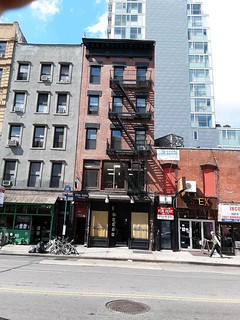
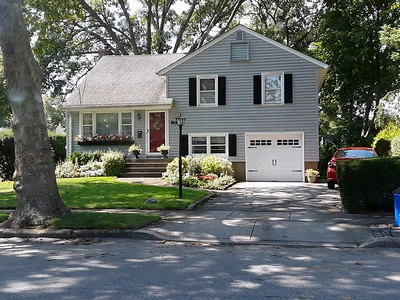
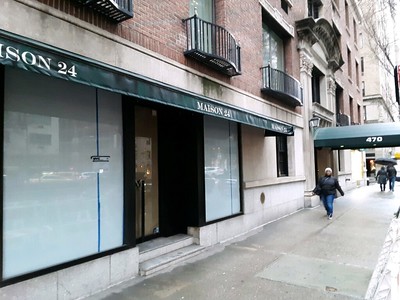
While the quiz asked "Try to figure out who owned these places", the question was only about the numismatic connection. -Editor
Scott Barman writes:
"Isn't the third one at 470 Park Ave in NYC where Stack's, or Stack's-Bowers, moving to?
I'll miss their old store that was almost a block away. I remember my father taking me there as a child when I started to get into coin collecting. Once a year he would take me to work with him in midtown. After work we would go over the Stack's and would get coins. That's how I completed a Roosevelt Dime collection when I was younger."
Correct! -Editor
Pete Smith writes:
"The tall skinny building was where Augustus Sage lived when he held a meeting to found the American Numismatic Society. It was a rented apartment.
"The gray house was once owned by John J. Ford. That one was easy.
I believe the final picture represents a bank building at 470 Park Avenue. Stack's Bowers Galleries is moving to that address."
Correct! Pete was the only reader to attempt all three, and the first to correctly name them. Congratulations! -Editor
Jim Neiswinter writes:
"The five story building is at 121 Essex St. This was the address where Augustus Sage lived and the site of the first ANS meeting in 1859. But since this particular building wasn't built until 1874 it is not the building where the 1st meeting was held.
The house at 176 Hendrickson Ave. in Rockville Center was the home of John Ford until 1987. Ford had a bomb shelter/vault in the basement.
470 Park Ave. will be the new home of Stacks/Bowers."
Thanks, everyone. -Editor
To read the earlier E-Sylum article, see:
QUIZ: NUMISMATIC MYSTERY ADDRESSES (https://www.coinbooks.org/v23/esylum_v23n15a21.html)

NOTES FROM E-SYLUM READERS: APRIL 19, 2020
Free Ticket!
John Regitko of Toronto, Canada writes:
"I always enjoy the time I spend reading your weekly E-Insane bulletin and I wondered how I can show my appreciation. Probably nobody has ever given you a free ticket before. I like you to have the attached Free Ticket for all you have done for numismatics."

Um, thanks! -Editor
More on Jay Galst
Anthony Terranova of New York City writes:
"I'm crushed by the news of my friend Jay Galst passing. He will be greatly missed by all my fellow New York Numismatic Club friends and members."
George Cuhaj shared these photos of the late Dr. Jay M. Galst of New York. -Editor
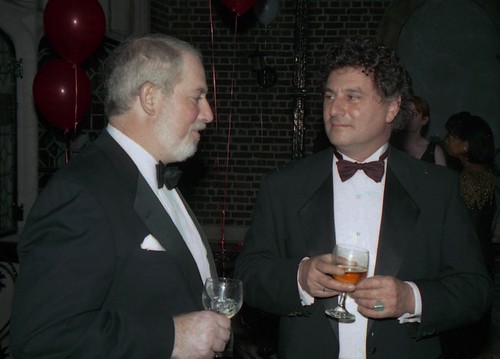
Jay Galst and Alan M. Stahl at the ANS Dinner honoring Eric P. Newman
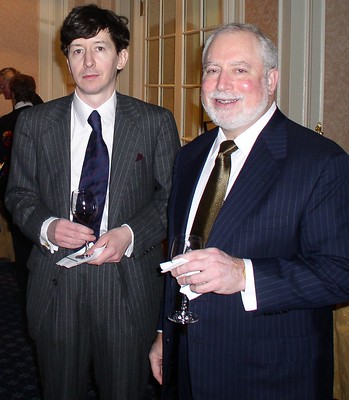
Normand Pepin and Jay Galst
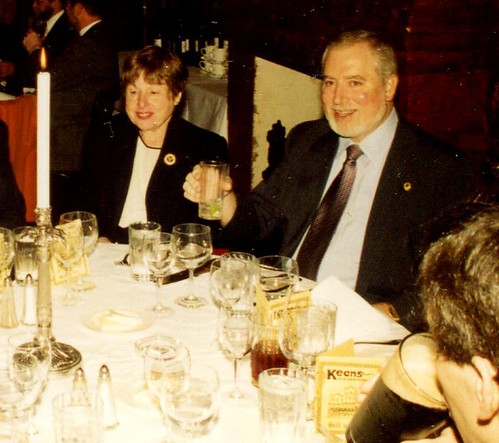
Ann S. Pollack and Jay Galst at Keens, 1997
Ursula Kampmann shares a great story about Dr. Jay Galst in an April 16, 2020 CoinsWeekly article. -Editor
To read the complete article, see:
Jay M. Galst (1950-2020) (https://coinsweekly.com/jay-m-galst-1950-2020/)
To read the earlier E-Sylum article, see:
JAY M. GALST (1950-2020) (https://www.coinbooks.org/v23/esylum_v23n15a12.html)
Barbara Gregory and The Numismatist
David Gladfelter submitted these thoughts on Numismatist editor Barbara Gregory. Thanks! -Editor
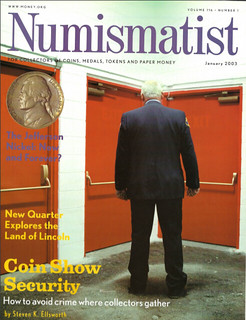 I just wanted to add my good wishes to those already given to Barbara Gregory on the occasion of her retirement as editor-in-chief of The Numismatist.
I just wanted to add my good wishes to those already given to Barbara Gregory on the occasion of her retirement as editor-in-chief of The Numismatist.
This monthly magazine of the American Numismatic Association has always been eclectic and fairly technical, although it's not what you would call a scholarly journal. So what is it about today's version that draws the reader in? The stories are lively as well as informative – they pique your interest over and beyond your particular collecting specialties. The content is well illustrated and well laid out, so that it catches the eye. Every issue has a cover story plus two or three features flagged on the cover, as well as recurring topics called "departments". The reader is thereby encouraged to become more of a generalist, to develop common interests with other collectors, to learn something new every month.
I pulled some back issues just to compare them as they changed over time. The changes came about gradually for the most part. The September 1981 issue, the first on which Barbara worked, had 100 pages of content and 200 pages of ads, each separate from the other. There was but one topic on the cover – the convention in New Orleans. Some of the content was in list form. Photos were in black and white and too many were of the people-holding-plaques variety, or group shots of backs of heads.
Improvements were coming along by September 1988, Barbara's first as editor. Cover art was more catchy and features were called out. The table of contents was more descriptive. Ads and content were less rigidly separated. Three-column layout made the articles easier to read.
Big changes came in January 2003 with an increase in format to its present 8½ by 11 inch size – what bibliophiles might call "quarto". Along with this change came the use of full color throughout the magazine, in both content and advertisements. In her monthly Editor's Desk column, Barbara explained that the changes were the result of collaborative effort among the editorial and administrative staff, the Board of Governors , the Publications Committee and outside consultants. "This issue … represents the realization of what the ANA's official publication could and should be: an attractive, appealing journal with respect for yesterday and a clear sense of tomorrow," she wrote. In his back-of-the-magazine column, Donn Pearlman, always with tongue in cheek, wrote: "The magazine needs to attract younger ANA members. Until recently, coin collecting had an image of white-haired –or no-haired – old men intently examining little coins with huge, Sherlock Holmes-style magnifying glasses. The world has changed. We now have balding old men using tiny, pocket-sized, five-power loupes."
In this her last issue, Barbara writes: "Working with and for our members always has been my greatest reward. … I likewise strived to ensure that The Numismatist is a friendly forum for collectors to share their thoughts, knowledge and experiences." That it is.
Amen! -Editor
To read the earlier E-Sylum articles, see:
NUMISMATIST EDITOR BARBARA GREGORY RETIRING (https://www.coinbooks.org/v23/esylum_v23n13a22.html)
NOTES FROM E-SYLUM READERS: APRIL 5, 2020 : Notes from Robert J. Leuver
(https://www.coinbooks.org/v23/esylum_v23n14a17.html)
The Kiss to the Sun
Regarding my question about a French medal last week, Ron Haller-Williams writes: 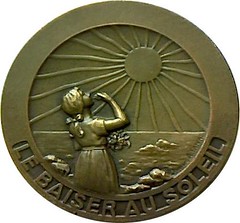
"You wrote, "The image I added is actually the obverse of a French medal given to tuberculosis survivors. Not sure what the lady is doing or eating." My response: Take a look at the legend, "LE BAISER AU SOLEIL" ("the kiss to the sun") - she's blowing a kiss to the sun, as a thank-you for its help towards her reconvery!"
I'd thought of translating the text but ran out of time. Thanks! Makes sense. -Editor
To read the earlier E-Sylum article, see:
COINS AND HEALTH (https://www.coinbooks.org/v23/esylum_v23n15a39.html)
More Thoughts on Eric Hodge's Illegible Word

Regarding the illegible word in a centuries-old document that Eric Hodge asked about, Ron Haller-Williams writes:
"(a) My original thought - and favorite, even after a first reading of the submissions so far - was "Prepared" (interpolating the word "head" before or after it), but I'm beginning to think "Pressured" (= impressed) might be most appropriate (again, interpolating the word "head"). Where else is there such a large flourish on a final "e"?
"(b) I'd agree that "Do" is being used for the last-referred-to ("Punch") rather than referred-to-just-above ("Head") - unless, perhaps, it might be a mis-spelled "Die"? Thinking about the context, surely one would use a PUNCH not a HEAD for defacing coins? And, in the context of tools, would one really speak of "the face of a head"?
"I think there are two tasks here, on different punches, in the same entry:
"(1) Altering the head of a punch
"and
"(2) making a new pressured [head] on the face of [a punch] for defacing Dollars.
"(c) Also, the entry for September 24 doesn't seem to add up: "Defacing 1600 Dollars @ 2s per 100" should be "£1/12/0". But that's out of line with other entries, so take a closer look at what follows the "@" - it is actually "9d per 100" !!!
"(d) In those Days, it was not unusual to use a capital Letter at the start of a Noun, as is done to this Day in the Country of Germany and other Lands using that Language."
Thank you! This is like a jigsaw puzzle with multiple possible solutions. Interesting. -Editor
To read the earlier E-Sylum article, see:
THOUGHTS ON ERIC HODGE'S ILLEGIBLE WORD (https://www.coinbooks.org/v23/esylum_v23n15a20.html)
Geoffrey Bell Spring Sale 2020
Brian Bell writes:
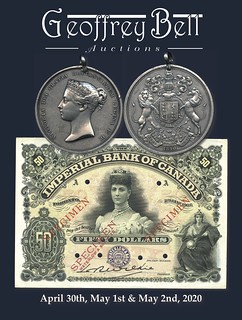 "Geoffrey Bell auctions is pleased to present a superb collection of loan company share certificates and related documents, the like of which has never been seen in
this country. Prior to 1954, Canadian chartered banks were prohibited under the Bank Act from lending on mortgages. Until then, and for a century previous, private banks,
insurance companies, trust companies and various savings and loan corporations filled this gap. The latter "near-banks" have received precious little attention from the
numismatic community, and their history and documents may be considered the final frontier in this area of the hobby. For those seeking new avenues for collecting, this sale
offers an unprecedented opportunity to select from the achievements of a very focused collector. Please see lots #628-695"
"Geoffrey Bell auctions is pleased to present a superb collection of loan company share certificates and related documents, the like of which has never been seen in
this country. Prior to 1954, Canadian chartered banks were prohibited under the Bank Act from lending on mortgages. Until then, and for a century previous, private banks,
insurance companies, trust companies and various savings and loan corporations filled this gap. The latter "near-banks" have received precious little attention from the
numismatic community, and their history and documents may be considered the final frontier in this area of the hobby. For those seeking new avenues for collecting, this sale
offers an unprecedented opportunity to select from the achievements of a very focused collector. Please see lots #628-695"
For more information, see:
http://www.gbellauctions.com/
2021 Red Book Changes
Adam L Spikes writes:
"Has anyone else noticed these two recent changes?
"1) The 2021 Red Book hardcover edition is 3/32nds of an inch thinner than the 2019 and 2020 hardcover editions. The 2019 and 2020 editions are both 30/32nds thick and have page 463 as the last page of the index. The 2021 edition is but 27/32nds and has page 462 as the last page of the index. This should come as a bit of a surprise since recent editions have been "loosening the belt", if you will, and expanding not to mention that there should be more content with every new year.
"2) The spiral edition Red Books of 2020 and 2021 have 24 loops as opposed to 19 loops in previous years (2016-2019, for example)."
Great observations. Here are Adam's photos. -Editor
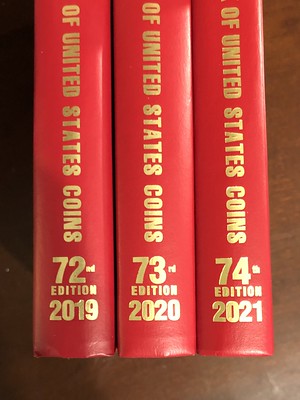
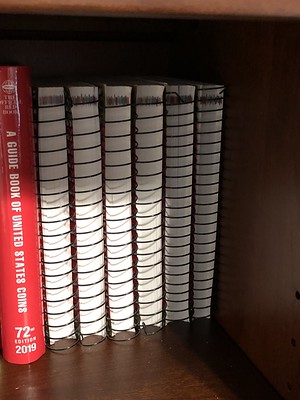
How secure is an armoured truck?
John Regitko passed along this note about an incident with a Brinks truck. Thanks. -Editor
 It must have been like something out of a movie script. The ramp from Highway 427 to Highway 409 in Toronto was sealed off with ambulances, fire trucks and police
vehicles. There were police, paramedics, firefighters and other emergency workers frantically trying to break into an armoured Brinks truck.
It must have been like something out of a movie script. The ramp from Highway 427 to Highway 409 in Toronto was sealed off with ambulances, fire trucks and police
vehicles. There were police, paramedics, firefighters and other emergency workers frantically trying to break into an armoured Brinks truck.
But the exercise was not to see how strong armoured vehicles are or how much effort it takes to break into one. Rather, the truck overturned attempting to negotiate the ramp.
So exactly how secure are these cash-carrying armoured trucks?
It took Toronto fire crews a full hour to free the three Brinks guards trapped inside.
I don't want to give away any secrets of how Toronto's well-trained staff managed to get inside, but after unsuccessfully trying to cut through metal, they managed to break the bullet-proof glass.
John adds:
"I never did find out how they managed to break the bullet-proof glass."
Numista Adds Banknote Catalogue
Aidan Work writes:
"Numista now has a banknote catalogue. There is always a need for fellow banknote & coin collectors to help in contributing photos & information.
"Eventually, there will be sections for community & complementary currency notes, & for postal orders."
To visit the Numista web site, see:
https://en.numista.com/
Thanks for the update - that's great news. See the links below for the earlier discussions. -Editor
To read the earlier E-Sylum articles, see:
BANKNOTE CATALOG WEB SITE PROPOSED (https://www.coinbooks.org/v22/esylum_v22n41a13.html)
NOTES FROM E-SYLUM READERS: OCTOBER 20, 2019 : The Colnect Banknote Catalog
(https://www.coinbooks.org/v22/esylum_v22n42a12.html)
MORE ON BANKNOTE CATALOG WEB SITES (https://www.coinbooks.org/v22/esylum_v22n50a09.html)
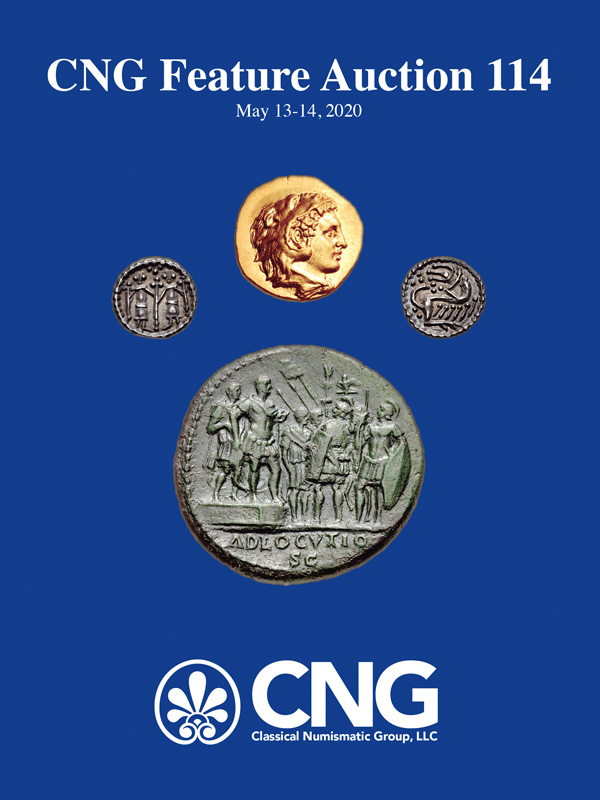
PENNSYLVANIA RAILROAD EMPLOYEE SPORT MEDALS
George Cuhaj has been cataloging Pennsylvania Railroad Employee Sport Medals, and submitted this request for some assistance from readers. Who can help? -Editor
Pennsylvania Railroad Employee Sport Medals
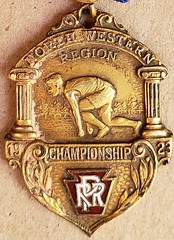
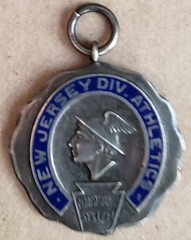
I am in the midst of a 20-year project of cataloging PRR Sport Medals. These were sponsored from about 1895 thru 1910 by local RR YMCAs and from 1916 thru 1938 at the division, region or system wide levels. Many come in original card presentation boxes with ribbons, some are now without ribbons and others are watch fobs.
I am asking the readership who collect to share images, so as to expand my master listing (which I will then re-share with contributors) and then present a final catalog via a free on-line publishing service.
If you have any of these, I would like a nice 300 DPI jpg image of each side so that I can determine wording and engraving and size in millimeters. I have gone ahead with a listing in a future TAMS Journal, but I am still looking for more information.
My email is George.cuhaj@yahoo.com. I will not make any offers of purchase (unless you make mention that the items are available), this information is being collected for research purposes only, I will not share your contributions with others but for a general acknowledgement in the final product.
Along with this notice are several examples of what I'm looking for. Thank you very much.
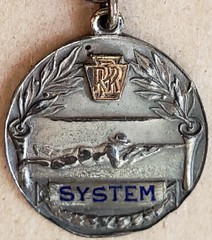
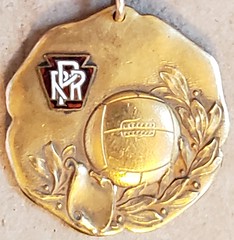
For some more information and images, see:
Medals from the Pennsylvania Railroad (http://www.railroadiana.org/hw/pgMedals_prr.php)

NICKEL RASH RUMORS
John Regitko writes:
"As a follow-up to David Pickup's earlier articles on coins and health, the following is something that I wrote up some time ago for Canadian Coin News magazine."
The Lighter Side by John Regitko
Over a decade ago, it was reported by CBC Radio in Northern Ontario that coins were a danger to your health. Although we didn't hear of any deaths as a result of handling coins, it was reported that coins could cause a rash, sometimes rather severe, when people touched them during routine use.
Interestingly, the story originally surfaced in Sudbury, Ontario, Canada's Nickel Capital and was first brought to my attention by Bill Waychison as published in the bulletin of the Timmins Coin Club.
The logic or illogical argument results from the fact that nickel powder produced when nickel ores undergo a hydrometallurgical process is toxic in powder form. It is this powdered nickel that was used to produce most of Canada's coins. In solid form as in a pure nickel coin, nickel is obviously not toxic. At the time, most of our circulating coins were made of nickel plated steel.
The Royal Canadian Mint issued a clarification in a press release after news reports indicated that 5 people at the Sudbury Centre Mall developed a rash, purportedly after handling coinage sent directly from the Mint. The coins involved were not rolled in materials used by the Royal Canadian Mint, indicating that the coins were not received from the Mint's distribution facilities.
The Mint's press release pointed out that coins struck by the Royal Canadian Mint and their packaging do not contain any substances, agents or products that could produce a skin rash or biological reaction of any sort.
The Sudbury Regional Police investigated the matter in order to determine the source of the substance. Health Canada was informed of the situation and was sent samples of the substance for analysis.
Thanks. I'm sure a media search would find quite a number of articles over the years with variations on this recurring theme. When things people interact with are manufactured normally, working properly, performing as designed and harming no none, that's nothing new and not newsworthy. So any slight potential deviation is seized upon as the basis of a report. That's not a bad thing in itself - this is how we learn about and fix problems. But twisting the story to make false claims is not in the best interest of anyone but the seller of the story. -Editor
To read the earlier E-Sylum articles, see:
GERMS AND MONEY (https://www.coinbooks.org/v23/esylum_v23n14a35.html)
COINS AND HEALTH (https://www.coinbooks.org/v23/esylum_v23n15a39.html)
COINS AND POISON
David Pickup submitted these notes on coins and poison. Thanks! -Editor
Coins and illness – Drinking your Good Health?
Continuing our series on coins and health I have been researching poisons, particularly arsenic. (I hope no-one looks at my search history on my computer!) That metal-like element is frequently found in detective stories and was a favourite of Agatha Christie. In Nineteenth Century Britain it was cheap and readily available as a rat killer and an ideal poison as had no smell and was tasteless. It was used widely in industry and some medicines.
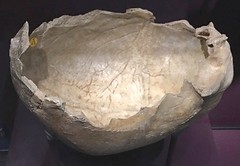 Arsenic has also been widely used in coin manufacturing since ancient times. It is found in alloys and has been used officially and by counterfeiters to whiten coins and
make copper coins look like silver. During the reign of Henry VIII the coinage was officially debased but then later the bullion content was restored. The workmen at the Mint
melting down the debased coins fell ill with a condition called the "savour". It was probably the effects of arsenic poisoning, were advised by doctors to drink from skulls. The
Mint obtained permission from the local authority to remove the severed heads from executions from London Bridge. This happened in 1560 and according to one source the mint
workers were German and Dutch. [1] Some recovered but most died, not surprisingly. I wonder how the survivors felt about drinking from skulls?
Arsenic has also been widely used in coin manufacturing since ancient times. It is found in alloys and has been used officially and by counterfeiters to whiten coins and
make copper coins look like silver. During the reign of Henry VIII the coinage was officially debased but then later the bullion content was restored. The workmen at the Mint
melting down the debased coins fell ill with a condition called the "savour". It was probably the effects of arsenic poisoning, were advised by doctors to drink from skulls. The
Mint obtained permission from the local authority to remove the severed heads from executions from London Bridge. This happened in 1560 and according to one source the mint
workers were German and Dutch. [1] Some recovered but most died, not surprisingly. I wonder how the survivors felt about drinking from skulls?
There is another, similar story about a man called William Foxley. He was a potter at the Mint in the 1540s, earning £10 a year. In April 1547 Foxley inexplicably fell asleep for 14 days and 15 nights. King Henry VIII‘s doctors could neither diagnose nor rouse him, and the king himself even visited him. He eventually woke up as he continued to live and work for another 40 years in the Tower until 1587. It is possible that Foxley suffered from metal poisoning such as lead or arsenic. [2]
So if you are self-isolating raise a toast to mint workers everywhere and throughout history, but be careful what you drink and what you drink from!
[1] The story appears almost word for word in Smyth, William Henry, (1856), Descriptive catalogue of a cabinet of Roman family coins belonging to His Grace the Duke of Northumberland Bedford: James Webb; Unknown The Report by Select Commission on the Royal Mint 1849; Rogers Ruding, (1840), Annals of the coinage of Great Britain and its dependencies London: John Hearne
[2] https://www.hrp.org.uk/tower-of-london/whats-on/the-towers-mint/surprising-stories-of-the-mint/#gs.3upxws
accessed 12 04 2020
To read the earlier E-Sylum articles, see:
GERMS AND MONEY (https://www.coinbooks.org/v23/esylum_v23n14a35.html)
COINS AND HEALTH (https://www.coinbooks.org/v23/esylum_v23n15a39.html)

VOCABULARY TERMS: CLAD, CLADDING
Dick Johnson submitted this entry from his Encyclopedia of Coin and Medal Terminology. Thanks. I added a medal image. -Editor
Clad, Cladding. Bonding together thin layers of metal of differing alloys to form a sandwich construction. Technically the outer or exposed layers are termed the clad layer, or lamina, the internal layer is the core. This is done in every instance for the physical characteristics of the outer or clad composition, as for the color, hardness, appearance, and electric sensitivity of this surface. The use of the core is generally one of lower cost than the clad metal. The line separating the core from the clad metal, called the boundry, it can be observed on the edge of U.S. coins minted after 1965 (but not those of some European coins, as Sweden, where upsetting is designed to cover the core on the edge).
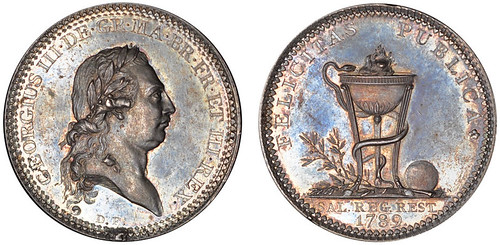
George III Recovery from Illness medal image from site of Gary Groll
Medals were first clad as early as 1789. In that year Barton's metal was used for the George III Recovery Medal by J.P. Droz (Brown 311) struck at Matthew Boulton's factory. Barton's metal was formed by rolling strips of silver (or gold) on a copper core with adhesion by fusion.
In 1964 the United States enacted a coinage law that required U.S. coins to be made of clad metal. Faced with a drastic coin shortage, a world-wide silver shortage and rising metal prices, the Treasury Department chose to turn to a copper nickel clad metal over a copper core for all former silver coins, dimes, quarters and half dollars.
This was a brilliant solution. Not only did it meet all the criteria of a circulating coin composition (including the demanding needs of the vending machine industry) but also considered the metal salvage of this composition. Skeleton scrap of this clad composition could be melted and easily reformulated back into a copper nickel formulation.
How clad strip is made. Ingots of the correct composition are rolled repeatedly to a thickness several times the thickness of the intended coin. They are metal cleaned by pickling. The layers are then placed in a rolling mill in proper sequence, the core between the two outer layers. They can be roll bonded if the metal strips are heated, then rolling is done under heat and pressure. If they are cold rolled they can be bonded by explosion bonding. The strips are then successively rolled until the required thickness is obtained.
Since January 1994 clad strips of copper nickel lamina on copper core are supplied to the United States Mints (Philadelphia and Denver) by PMX Industries, Cedar Rapids, Iowa, which uses the roll bonded method. Each strip weights between 3,000 and 7,000 pounds and are approximately 1,000 feet long. The strips have the following dimensions:
Strip Width Thickness
50 Cent . . 12 9/16-inch (319.08mm) .0685-inch (1.740mm)
25 Cent . . 12 13/16-inch (325.43mm) .0545-inch (1.384mm)
10 Cent . . 12 11/16-inch (322.26mm) .041 -inch (1.041mm)
The strip must be manufactured within a permitted tolerance of .0015-inch (.038mm) thickness for clad strip of any denomination.
The mints blank the strips and return the skeleton scrap strips to the supplier. The supplier repossesses the scrap by adding fresh nickel to the formulation to the correct formula (75% copper 25% nickel) for new copper nickel clad layers.
The mints blank about 75% of the strip (73% at Philadelphia Mint) and return the balance. The blanks are upset by upsetting machines then struck in coining presses within the mint.
More recently, the U.S. Mint has been contracting the blanking to private industry as well as the formulation and rolling. Thus economies are achieved by not having to ship the skeleton scrap for reprocessing. The mint receives blanks for upsetting and striking within the mint.
Clad coinage characteristics. When clad blanks are struck, particularly during coining, the surface displacement comes only from the outer lamina on each side. The inner core is unaffected. On solid blanks metal is drawn from deep within the blank in addition to surface movement into the die cavities. The boundary on clad blanks literally acts as an edge beyond which no metal flow occurs in the core. This is quite evident when the lamina becomes separated from the core. To a degree, clad compositions effectively eliminate suction or ghosting in struck pieces.
Clad anomalies. Potential for a new group of errors occurred once a clad composition was chosen for national coinage. The debonding of the clad lamina layer, created a new class of lamination errors. One anomaly can occur before the coin is struck – causing a lightweight blank and very poor detail – or another after the coin is struck, with clad metal sometimes still in place, more often separated. The separating of the clad layer is called peeling.
Should the separated lamina flake off and fall onto another blank while in the coining press it could be impressed into another coin; often this is a letter (from the high stress area of the legend) and is called a dropped letter. If the flake is still attached to the coin it is called a clamshell by collectors, the point where it is still attached is called the hinge.
Reference:
B12 {1969} Young.
CH82 {1998} Doty, p 36 (Barton's metal).
So... will Boris Johnson get a recovery medal, too? -Editor
Looking for the meaning of a numismatic word, or the description of a term? Try the Newman Numismatic Portal's Numismatic Dictionary at: https://nnp.wustl.edu/library/dictionary
Or if you would like a printed copy of the complete Encyclopedia, it is available. There are 1,854 terms, on 678 pages, in The Encyclopedia of Coin and Medal Technology. Even running two a week would require more than 19 years to publish them all. If you would like an advance draft of this vital reference work it may be obtained from the author for your check of $50 sent postpaid. Dick Johnson, 139 Thompson Drive, Torrington, CT 06790.
SAMUEL LEOPOLD KELLER (1862-1946)
 Samuel Leopold Keller (1862-1946), was born on June 10, 1862, at New York City, the son of Franco-German immigrants, Leopold Keller (1833-), a butcher, and his wife
Adell Litt (1837-). His parents immigrated to America in the 1850's.
Samuel Leopold Keller (1862-1946), was born on June 10, 1862, at New York City, the son of Franco-German immigrants, Leopold Keller (1833-), a butcher, and his wife
Adell Litt (1837-). His parents immigrated to America in the 1850's.
On June 12, 1889, he married Jacqueline Deleon (1863-1936), at Charleston, South Carolina. They had a daughter Agnes (1891-1941)
He became the manager of E. S. Dean Company, 35 Broadway, New York, a bucket shop enterprise, closed by the United States Post Office in 1897 for fraud. The company was suspected of swindling $5 million USD. It was considered the greatest swindle ever perpetrated. The company promised a capital return on investment of 100 to 400 per cent through secret insider stock manipulation.
He lived at 3800 Broadway, New York City, New York.
On December 8, 1908, Samuel L. Keller incorporated the Money and Stamp Brokerage, 150 Nassau Street, New York.
In January 1910, Samuel L. Keller filed bankruptcy.
He became a member of Kinstler & Company, Beechhurst, Queens, Long Island, New York.
The 1925 New York Census lists him residing at 16th Avenue and 31st Street, New York.
In the 1930 U. S. Census he is listed as a salesman living at 10-09 157th Street, New York.
On June 8, 1936, Jacqueline Deleon Keller died at Beechhurst, Long Island, New York.
He died on June 27, 1946 at Sacramento, California.
To read the complete article, see:
KELLER, SAMUEL LEOPOLD
(http://www.numismaticmall.com/numismaticmall-com/keller-samuel-leopold)
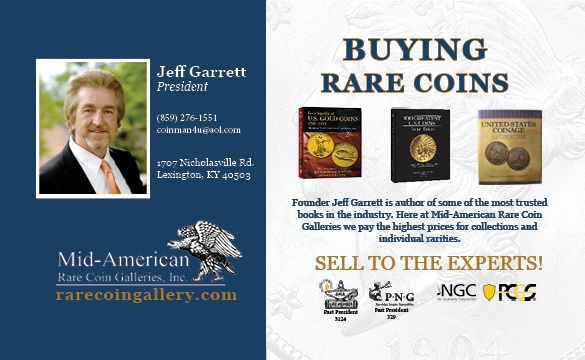
THE 1740 PHILADELPHIA HALFPENCE RIOT
As noted in last week's article about the elusive New England countermark, in recent weeks I've been compiling for the Newman Numismatic Portal citations of articles on numismatics published in The Historical Magazine. Here's another one of particular interest, ably transcribed by NNP's Kelli West. Thanks! It's from the April 1861 issue, page 119. -Editor
NOTES AND QUERIES
A CURRENCY QUESTION (from a Philadelphia paper for January 8, 1740-1).- "Great quantities of English Half-Pence being imported here since the falling of the exchange, to be passed as Permits, some considerable Dealers were apprehensive we should be overstocked with them, and began last week to refuse them otherwise than at the rate of five for four pence. Their example being followed by many of the shop keepers, while others continued to take them for pence apiece, it occasioned considerable confusion in small dealings. And the bakers refusing to make any more bread ‘till the money was settled, the Mob rose on Friday night, and went round the town, breaking the windows of several merchants and others, and very much disturbed the city. They began to assemble again the night following; but by the vigilance and resolution of some of the magistrates, they were timely suppressed, and the city has since remained quiet."
Julia Casey was able to quickly find the referenced article in The Pennsylvania Gazette for January 8, 1740. Thanks! We'll also transcribe this for the portal. -Editor
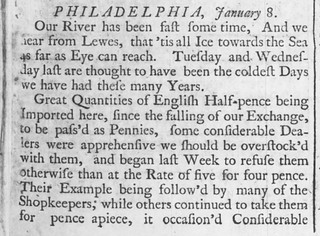
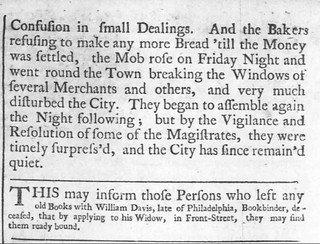
Plenty of numismatic items reference or commemorate riots, but few were sparked by a numismatic item. There was the Milwaukee bank riot of 1861 and the Cincinnati postage currency riot of 1862, but I'd never heard of this halfpence riot before. Fascinating history. -Editor
To read earlier E-Sylum articles, see:
NUMISMATICS & RIOTS (https://www.coinbooks.org/esylum_v07n15a20.html)
NUMISMATICS AND RIOTS (https://www.coinbooks.org/esylum_v07n16a15.html)
THE POSTAGE CURRENCY RIOT OF 1862 (https://www.coinbooks.org/esylum_v15n46a27.html)
THE ELUSIVE NEW ENGLAND COUNTERMARK (https://www.coinbooks.org/v23/esylum_v23n15a31.html)
THE 1883 NICKEL RUSH
Students of American numismatic history know that the changeover from large to small cents in 1858 suddenly got people interested in looking at their pocket change and ultimately kickstarted organized numismatics in the country. Similarly the changeover from silver to clad coinage in 1965 led to a golden age of baby-boomer collectors.
In a Mint News Blog article published April 15, 2020, Dave Bowers highlights another year when collecting in the country got a big boost. With permission we're republishing it here. Thanks! -Editor
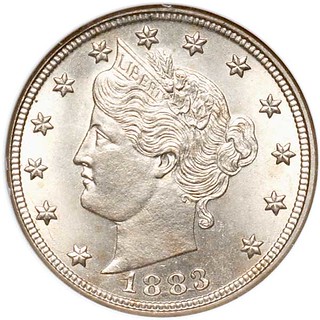
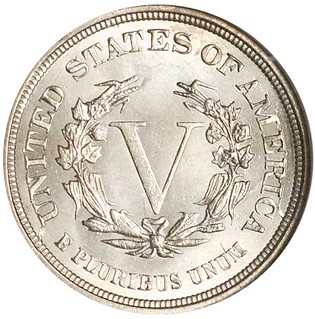
In early 1883 there were perhaps 10,000 to 20,000 people who collected coins in a systematic manner. No more than a couple thousand belonged to one or another of the societies. The American Journal of Numismatics was the magazine of record, supplemented by newsletters and auction catalogs. For two years Chief Engraver Charles E. Barber had been experimenting with a new design to replace the Shield-motif nickel in use since 1866. In 1881 and 1882 patterns with a Liberty Head were made — the visage of the goddess Diana according to some. Early in 1883, after the production of Shield nickels, the new Liberty Head nickel made its debut. The coin was beautiful. On the obverse, Miss Liberty was surrounded by 13 stars with the date below. The reverse had a wreath, an inscription around the border, and, at the center, the denomination given by the Roman numeral V, easy enough to understand as meaning five, as the current nickel three-cent piece, having been made since 1865, was denominated in Roman numerals as III. Similarly, the silver trime of 1851 to 1873, of which millions continued to be melted by the Treasury, was marked III.
Almost immediately after the new nickels reached circulation, con artists realized that the diameter was about the same as that of the $5 gold half eagle, which also had a Liberty Head, but of slightly different appearance. The new nickels were given a plating of gold, and, in some instances, reeding was added to the edge in a machine shop. With their V denomination, they resembled a new design of the half eagle!
To avoid prosecution, the typical passer of the new "half eagle" tendered it in payment of something worth five cents, say a cigar. The shopkeeper or cashier, assuming it was a gold coin, returned $4.95 in change. If confronted, the passer said that he had given a regular nickel, gold plated, and it was the cashier who was at fault for thinking it was worth so much. The Secret Service was alerted and soon fielded several "operatives," as agents were called, to arrest perpetrators across the country, including an intensive search on the West Coast.
The Mint reacted quickly and changed the reverse design by adding the word CENTS on the rim below the V. Newspapers picked up on the story, stated that the Mint had made a mistake, and that the Treasury was going to call in the CENTS-less nickels, after which they would have great value. By that time, 5,474,000 of the potential treasure nickels were in circulation.
The nickel rush was on!
All across America, men, women, and children scrambled to gather as many of these rarities as could be found. Nearly everyone was lucky. Some were able to squirrel away dozens. Interest spread to other kinds of coins. Almost overnight, the number of coin collectors multiplied, probably to 50,000 or even more. This ushered in an era of numismatic activity that saw dozens of people become dealers and over a dozen new magazines featuring rare coins, usually in combination with other collectibles such as stamps, fossils, autographs, and the like.
Coin auctions increased to a frequency of about one per week. In the meantime, nickels with the "corrected" design were struck to the extent of 16,026,200, but attracted no interest at all. As you read these words today, 1883 nickels without CENTS are very common in Mint State, and those with the word are dozens of times rarer in the same condition!
Suggestion: Add one to your collection!
To read the complete article, see:
Bowers on collecting: Let's go back to 1883!
(https://mintnewsblog.com/bowers-on-collecting-lets-go-back-to-1883/)

PODCAST REVIEW: THE COINAGE ACT OF 1857
1858 was a monumental year for American numismatics for more than just the introduction of the small cent. Along with the old large cents the Coinage Act of 1857 ended the circulation of foreign coinage as legal tender.
In this article republished with permission from the April 2020 E-Gobrecht (a publication of the Liberty Seated Collectors Club), Len Augsburger reviews the first episode of The Planchet podcast from the ANS. -Editor
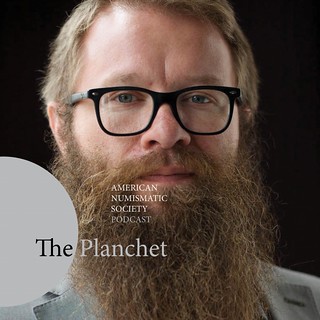 The American Numismatic Society (ANS) recently launched a podcast, The Planchet, and the first episode will be of particular interest to collectors of Liberty Seated
Coinage. Prior to the Coinage Act of 1857, which ended the circulation of foreign coinage as legal tender in the US, a whole host of world coinage was used in the United States,
as the Liberty Seated coinage of this period was not sufficiently ample to meet all the needs of commerce.
The American Numismatic Society (ANS) recently launched a podcast, The Planchet, and the first episode will be of particular interest to collectors of Liberty Seated
Coinage. Prior to the Coinage Act of 1857, which ended the circulation of foreign coinage as legal tender in the US, a whole host of world coinage was used in the United States,
as the Liberty Seated coinage of this period was not sufficiently ample to meet all the needs of commerce.
Andrew Reinhard, ANS Publications Director, hosts the podcast, and the first interviewee is Jesse Kraft, assistant curator of American coinage at ANS. Kraft recently completed his PhD studies at the University of Delaware, and his doctoral thesis focused on American circulation coinage prior to 1857.
Many of the coins in the U.S. came from Mexico, part of the Spanish empire at the time, and English, French, Portuguese, and German coinage was seen as well. But the Mexican coinage was the most prominent, especially the silver eight reales or "pieces of eight." Any commercial transaction might involve a bit of arithmetic, as exchange rates for all of these currencies varied over time. Exchange charts were common, and people were forced to become adept at making the necessary calculations. This was nothing new and was even worse with the use of paper money, which tended to devalue more than "hard" money. Eighteenth century arithmetic books are highly focused on exercises related to these conversions. The difficulty of constant conversion is best illustrated in modern times by the United Kingdom conversion from fractional (pounds / shilling / pence) to decimal coinage in 1971, which caused more than a bit of irritation among those used to the "old ways."
The coins in America followed immigration patterns – if the Germans and Irish were coming to the U.S. in large numbers in the 1830s and 1840s, their money came with them, and so the mix of circulating money was by no means constant. The flow of foreign coinage into New York was such that a U.S. Mint was considered for that city, but this never came to fruition. As foreign coins came into the U.S., much of it was recoined, and this was the basis of the U.S. Mint collection, today held by the Smithsonian. Adam Eckfeldt, U.S. Mint coiner, and others had the pleasure of cherrypicking choice specimens for nothing more than melt value as depositors brought in gold and silver for conversion to U.S. coinage.
Of all foreign currency, Spanish American silver remained the most popular and was accepted throughout the world, so much so that the Spanish eight reales coin was used as the basis for the U.S. silver dollar. Interestingly, the acceptance of Spanish coinage changed as colonial Spanish states became independent in the 19th century – without the mother country behind the weight and content of the coinage, people distrusted the product of the new republics.
The Act of 1857 also changed the copper standard for the cent, marking the transition from large to small cents. This greatly simplified one's coin purse – and the result was a more uniform and standardized set of coins. This also worked against the counterfeiters – it was easier to slip a bad coin into circulation when the variety of circulation coinage was extensive, and people were not able to carefully scrutinize so many different coins.
A typical coin purse of the 1840s might contain English halfpennies, worn Spanish silver, coins cut in halves or quarters, and perhaps a few "clipped" pieces, which could be relatively valued depending on how much of the coin remained. Counterfeits were an ever present danger, and counterfeiters were incentivized by the bullion value of silver and gold coinage – something not seen in modern times, as counterfeiters now focus on paper money.
If you want to understand a bit more about the coins circulating in America during this period, you will do well to stream or download this 50-minute podcast, which may be accessed at http://numismatics.org/planchet/01-01/ .
For more information on the Liberty Seated Collectors Club, see:
http://www.lsccweb.org/
To read the earlier E-Sylum article, see:
NEW PODCAST: THE PLANCHET (https://www.coinbooks.org/v23/esylum_v23n14a04.html)
ANA CELEBRATES WOMEN IN NUMISMATICS
The American Numismatic Association's April 2020 Tales from the Vault blog celebrates Women in Numismatics. -Editor
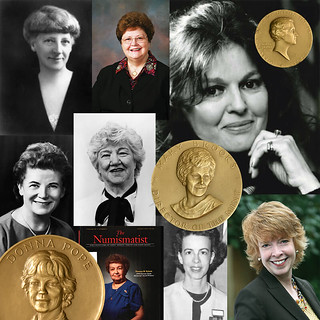 This year marks the centennial of the Nineteenth Amendment, granting women the right to vote in the United States. The ANA and Money Museum hold lasting reminders of the
important role of women as leaders in our hobby through medals, the Numismatic Hall of Fame, and honorary titles.
This year marks the centennial of the Nineteenth Amendment, granting women the right to vote in the United States. The ANA and Money Museum hold lasting reminders of the
important role of women as leaders in our hobby through medals, the Numismatic Hall of Fame, and honorary titles.
Medals in the ANA's Edward C. Rochette Money Museum honor the women who have served as U.S. Mint Directors: Nellie TayloeS Ross (1933-1953, also first woman to serve as governor of a U.S. state, Wyoming, 1925-1927), Eva Adams (1961-1969), Mary Brooks (1969-1977), Stella Hackel Sims (1977-1981), Donna Pope (1981-1991) and Henrietta Fore (2001-2005) have all been honored on Mint medals. Several objects in the collection feature the work of Elizabeth Jones, the only woman to serve as Chief Engraver of the U.S. Mint (1981-1991).
Outside the Money Museum is the Numismatic Hall of Fame, honoring American giants in the hobby. Women honored with a plaque for induction into this prestigious hall include Agnes Baldwin Brett (first curator at the American Numismatic Society, inducted 1974), Margo Russell (longtime editor of Coin World, inducted 1986), Eva Adams (inducted 1986), Catherine Bullowa-Moore (noted dealer and numismatic ambassador, inducted 2006) and Beth Deisher (longtime editor of Coin World, inducted 2013).
Two women have served as President of the ANA: Virginia Culver (1973-1975) and Florence Schook (1985-1987). Schook received the Farran Zerbe Memorial Award in 1994, and ANA educational classes are offered by the Florence Schook School of Numismatics.
The Elvira Clain-Stefanelli Memorial Award for Achievement in Numismatics was established in 2013 to honor women who have made significant contributions to numismatics. It is named for the prominent numismatist and longtime Smithsonian curator.
This March marked the end of the long and distinguished ANA career of Barbara Gregory. She was the first female editor-in-chief of The Numismatist, and her tenure (1988-2020) was the longest in the history of the magazine. The annual ANA Outstanding Club Publications competition is named in her honor.
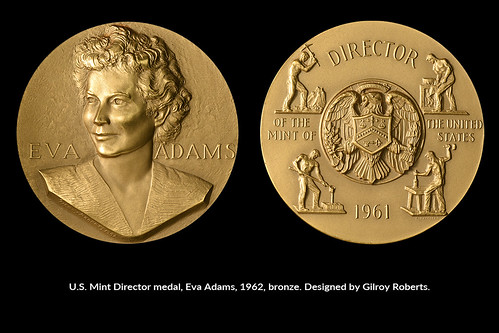
To read the complete article, see:
CELEBRATING WOMEN IN NUMISMATICS
(https://blog.money.org/coin-collecting/celebrating-women-in-numismatics)
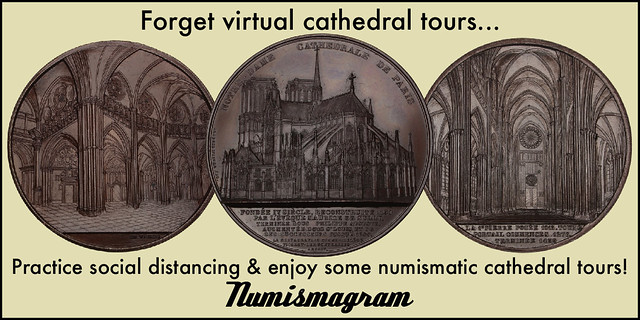
THE UNIQUE 1952 GEORGE VI PROOF PENNY
This week Numismatic Guaranty Corporation announced it had certified a unique 1952 Great Britain Penny. Sovereign Rarities is offering the piece at fixed price. Steve Hill kindly provided this detailed description. Thanks! -Editor
GEORGE VI 1952 PROOF PENNY, THE ONLY EXAMPLE THAT EXISTS, UNIQUE PF64RB
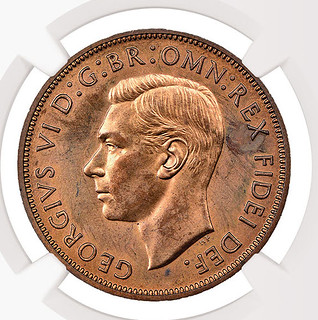
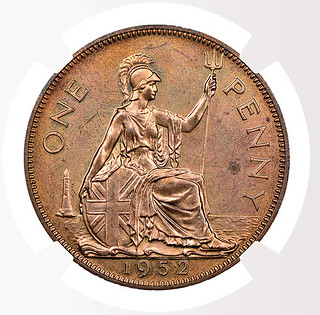
George VI (1936-52), Proof Penny, 1952, second issue (1949-52), bare head in profile left, raised HP below, initials of designer Thomas Humphrey Paget, legend commences lower left with toothed border surrounding, GEORGIVS VI D: G: BR: OMN: REX FIDEI DEF:, rev. struck en medaille, Britannia seated right with heraldic shield and trident, crested waves below, sea beyond each side with lighthouse at left, date in exergue, denomination as legend surrounding with toothed border, ONE PENNY, weight 9.52g (Peck - reverse B; Fr. - dies 3+C; S.4117). Attractively toned with full underlying brilliance and lustre, one darker patch of tone at X of obverse legend, small spot below truncation, one tone spot on reverse field under last N of legend, otherwise as struck and the only example known to exist, has been slabbed and graded by NGC as PF64RB, Unique!
The abbreviated Latin legend translates as "George the Sixth, by the grace of God, King of all the Britains, Defender of the Faith" the Emperor of India title having been dropped since 1949.
Provenance:
Ex A. H. Baldwin, 125th Anniversary sale, a Celebration 1872-1997, 13th October 1997, lot 67.
Ex Parry Collection, Mark Rasmussen Numismatist, List 9, March 2006, item C109.
Ex Mark Rasmussen Numismatist, List 31, Spring 2018, item 163.
This intriguing proof coin is the rarest proof penny of the entire series of copper and bronze pennies, with a rarity on par with the unique currency George III 1808 Penny and the unique currency Elizabeth II 1954 Penny both of which are not proofs like the 1952. The existence of this unique 1952 Proof Penny was not known publicly until its initial appearance at numismatic auction in October of 1997 some 45 years after it was struck. The specialised reference books by Peck and Freeman did not list a 1952 Penny as proof or currency and both authors went as far as to say that "no pennies dated 1952 were struck" which is repeated on page 67 of the 2006 reprint of Freeman and page 514 of Peck. Coin Yearbook still does not list it, but the Spink Standard Catalogue does as "unique" but without a suggested retail price.
The British Numismatic world was astonished to see this coin appear in the A. H. Baldwin 125th anniversary auction on the evening of the 13th October 1997, an auction that drew on coins selected from the famed "basement" stock cache of rare and unusual coins belonging to then family business. As the Foreword of this auction catalogue states "Over the years rare, interesting and splendidly struck specimens have been set aside for our own enjoyment" having already mentioned that the five generation family business had had the pleasure of many years dealing, handling, and researching countless unusual and beautiful pieces. This proof coin appeared for sale as lot 67 at the auction with the following one-line description "George VI, Proof Penny 1952. Spot on reverse, otherwise mint state and believed unique" with a mere footnote to say "There was no currency issue of this date." The coin fetched £23,468 including premium on that evening just over 22 years ago and sold to Spink, who sold it the following day to the premier UK collector of the rare pennies at that time.
This unique 1952 Proof Penny along with two of the other rare pennies (Edward VIII 1937 Proof and 1954 currency) then passed privately some five years later to the next major Penny collector to emerge in the UK; who retained it till 2006 when it was sold as part of the "Parry" Collection. The same trio of rare pennies and the 1933 currency Penny in Parry, then moved on to the next major collector who had emerged based overseas. Subsequent selections of the overseas collection then appeared for sale in the Rasmussen list of Spring 2018, including the unique 1952 Proof Penny and the unique 1808 currency copper Penny.
The 1808 currency copper Penny has since been auctioned on 24th September 2019 by Spink as part of the "Waterbird" Collection where it fetched £90,000 including premium. This sale also contained the extremely rare Edward VIII Proof Penny dated 1937, one of two in private ownership, though it seems a total of six pieces exist, which achieved £133,200 including the buyer's premium.
The other great classic rarity of the Penny series is the more common 1933 Penny of which there would seem to be seven examples in existence, three of which are held privately. The most recent example of which was sold publicly at the Heritage Auction held in the USA on the 11th August 2016 for a total of $198,000 including premium. There are also four known pattern pennies dated 1933 of a different obverse and reverse design by Frenchman Andre Lavrillier, which are also highly coveted and valuable. The existence of the 1933 Penny was not realised properly by collectors till many years afterwards (in a similar vein to the unique 1952 Proof Penny) as the mint did not officially mint any for currency purposes. The small number struck were for proof of record and mainly for ceremonial use as a component part of proof sets for building foundation stone placements. The first 1933 Penny to ever appear at auction sale was within a date run of all bronze 20th Century coins offered as one lot in a 1951 Glendining sale, and went nearly unnoticed as an eighteen year-old modern coin in a 615 coin quantity lot. The significance of the coin only becoming more prominent and apparent in the late 1950s and early 1960s as the craze for checking change became more prevalent with the plans to withdraw pre-decimal coinage. The unique 1954 currency penny was discovered in change in 1956 and sold to C. Wilson Peck for instance (Peck 2508). The value of the 1933 Penny at auction therefore only escalated upon the next auction appearance in 1969 some 35 years after the striking of the coins and from then onwards.
It is perhaps understandable that the George VI 1952 Proof Penny remains a Unique piece, as the King died very early in 1952 passing away on 6th February. Only the smaller denominations of currency coins that were in great demand were struck for circulation in 1952, with the larger denominations omitted in anticipation of a new reign and a new coinage for Queen Elizabeth II. The only mass-produced currency coins dated 1952 are the Sixpence which is rare, brass Threepence, Halfpenny and Farthing.
As for the larger denominations the 1952 Halfcrown is known from one currency striking and one proof striking only, the latter was also in the 1997 Baldwin 125th Anniversary sale. There is no 1952 Florin known at all or a Scottish reverse Shilling. There is a unique proof English reverse Shilling, and then there is the unique 1952 Proof Penny offered herewith.
We also find it interesting to note that there is one extremely rare or unique rare proof pre-decimal Penny for each monarch of the house of Windsor, George V has the 1933 Penny, Edward VIII the 1937 Proof Penny, George VI this unique 1952 Proof Penny and Elizabeth II the unique 1954 currency Penny.
The 1952 Proof Penny remains an enigma as the only unique Proof striking of a pre-decimal Penny of the 20th Century.
£175,000
To visit the Sovereign Rarities web site, see:
https://www.sovr.co.uk/
THE BOOK BAZARRE
WEIR FARM QUARTER: A NATIONAL PARK FOR ART
The launch ceremony was cancelled, but the Weir Farm quarter has been launched by the U.S. Mint. Here's an excerpt from a story in the local Wilton Bulletin. -Editor
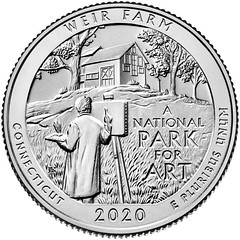 Don't be surprised if you wind up holding a little piece of Connecticut in your hand one day soon.
Don't be surprised if you wind up holding a little piece of Connecticut in your hand one day soon.
On Monday, April 6, the United States Mint officially released a quarter bearing the image of Weir Farm National Historic Site. The coin is part of the Mint's America the Beautiful Quarters® Program, which honors national sites in each of the 50 states, the District of Columbia and five U.S. territories.
The coin is being released into general circulation, but it will not be available at the park. It depicts an artist painting en plein air, with J. Alden Weir's studio in the background. It proclaims that Weir Farm is "A National Park for Art."
The coin was designed by Artistic Infusion Program artist Justin Kunz and sculpted by Medallic artist Phebe Hemphill, who are both credited with the artistry of several coins issued by the Mint.
There was to have been a celebration at Weir Farm on April 6 and 7, but due to restrictions on large public gatherings during the COVID-19 pandemic, the special events planned for the launch of the quarter were canceled. The park is hopeful a future date can be set to hold a coin forum and celebration.
Weir Farm is the only national park dedicated to American painting, and was home Julian (J.) Alden Weir, often referred to as the "father of American Impressionism." He settled here in the late 1800s, painting extensively in the gardens, at the pond, and throughout the rest of the grounds. Many of his contemporaries came to visit and paint as well.
A succession of artists, including Mahonri Young and Sperry Andrews, followed in his footsteps.
To read the complete article, see:
New quarter honors Weir Farm
(https://www.wiltonbulletin.com/news/article/New-quarter-honors-Weir-Farm-15196553.php)
GERMAN NOTGELD COINS
Recently Frank Robinson blogged about working with a collection of German notgeld coins. With permission, we're republishing his article here. Thanks! -Editor
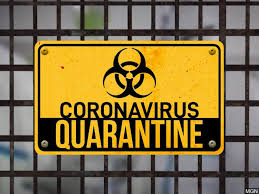 We're now seeing pandemic literature — personal accounts from people about coping with home confinement. My own normal life is much like quarantine anyway. Luckily my
business of selling collector coins, by mail and internet, is largely unaffected (though I can't buy at coin shows). Practically my only outings are to the post office.
We're now seeing pandemic literature — personal accounts from people about coping with home confinement. My own normal life is much like quarantine anyway. Luckily my
business of selling collector coins, by mail and internet, is largely unaffected (though I can't buy at coin shows). Practically my only outings are to the post office.
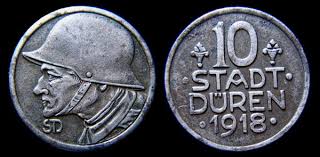 Recently quite a few hours were consumed working on a lot of over 800 notgeld coins I got from a German auction. These were issued by thousands of towns and businesses
during and shortly after WWI. (France also had similar local coins.) As a kid, knowing that "geld" meant money (my mother is German), I assumed "notgeld" meant something like "not
real money." Actually, "not" is a German word for "emergency." So working on these "emergency coins" during our own national emergency seemed fitting.
Recently quite a few hours were consumed working on a lot of over 800 notgeld coins I got from a German auction. These were issued by thousands of towns and businesses
during and shortly after WWI. (France also had similar local coins.) As a kid, knowing that "geld" meant money (my mother is German), I assumed "notgeld" meant something like "not
real money." Actually, "not" is a German word for "emergency." So working on these "emergency coins" during our own national emergency seemed fitting.
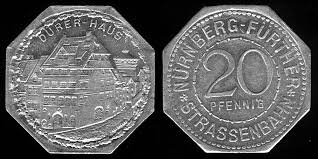 Many sport interesting pictorial designs. One noteworthy series of 45 was from Nurnberg, showing all different local landmarks and historical personages. My grandparents
were from Nurnberg and had a set of these. They're common and inexpensive. Over the years I've handled many, sometimes in original albums (less common).
Many sport interesting pictorial designs. One noteworthy series of 45 was from Nurnberg, showing all different local landmarks and historical personages. My grandparents
were from Nurnberg and had a set of these. They're common and inexpensive. Over the years I've handled many, sometimes in original albums (less common).
Some notgeld coins were issued in prisoner-of-war camps. "Camp" in German is "lager." Prisoners "gefangenen." War is "krieg." Germans often make compound words — thus "kriegsgefangenenlagergeld." There were also special issues using encapsulated stamps. Those are kriegsgefangenenlagerkapselgeld. One sees these words in German coin sale catalogs. I remember using this as an example, when telling my small daughter about German compound words. Afterward she danced around merrily chanting, "kriegsgefangenenlagerkapselgeld, kriegsgefangenenlagerkapselgeld."
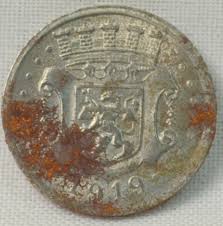 Most notgeld coins were made of iron or zinc, and often suffer from ugly rust or white encrustation. On many, a little work with a wire brush removes the crud. (I've
made a board with round slots to hold coins in place for that.) But several hundred needed more drastic treatment. These I put in a rock tumbler (another useful piece of
equipment) with some lemon juice (mildly acidic). After four hours nearly all emerged quite nice.
Most notgeld coins were made of iron or zinc, and often suffer from ugly rust or white encrustation. On many, a little work with a wire brush removes the crud. (I've
made a board with round slots to hold coins in place for that.) But several hundred needed more drastic treatment. These I put in a rock tumbler (another useful piece of
equipment) with some lemon juice (mildly acidic). After four hours nearly all emerged quite nice.
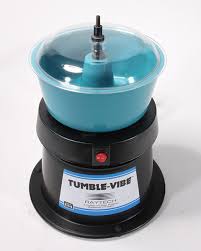 Happily this lot had come alphabetized by town in small envelopes. That saved some effort, but I did have to re-sort the ones I'd tumbled. Next, the real work: having
handled thousands before, most of the common ones I could recognize as such, but many I had to research. There isn't a good up-to-date catalog. I have two older ones that often
disagree, but between them I can get an idea about scarcity, to price accordingly.
Happily this lot had come alphabetized by town in small envelopes. That saved some effort, but I did have to re-sort the ones I'd tumbled. Next, the real work: having
handled thousands before, most of the common ones I could recognize as such, but many I had to research. There isn't a good up-to-date catalog. I have two older ones that often
disagree, but between them I can get an idea about scarcity, to price accordingly.
About 150 better ones I pulled out to sell individually. The rest in group lots. I learned this shtick early in my coin dealing, when I put out a price list including many common German coins at ten or twenty cents each. They didn't sell. Preparing my next list, I didn't feel like retyping all that (this was before word processing). So I just added up the prices and entered "Lot of X-number of German coins" at that combined amount. Guess what? Everybody wanted to order it! Collectors love to play around with coins in batches like that (I do too), and it's a very effective selling tool. Also far more efficient than hawking them one-by-one.
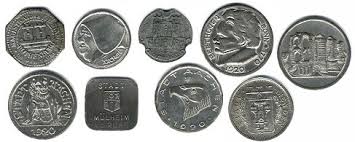
So the bulk of the notgeld coins I carefully organized into nice big group lots, each with all different varieties but uniform quality. (Quality control is another watchword for my business.)
All in all, a lot of work. But having gotten this lot at a very nice price, little over a dollar per coin, I'll wind up making a couple of thousand on the deal — while having had a lot of fun, and improving my notgeld knowledge. Though my hand is a bit sore from all the wire brushing.
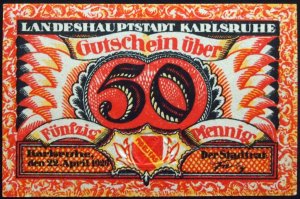 After the era of notgeld coins, in the early '20s, came the time of paper notgeld notes, from Germany and, even more prolifically, Austria. The varieties are endless,
and you can buy them even cheaper than the coins. Sitting here I've also got a few thousand of those to work on. At least they don't need cleaning.
After the era of notgeld coins, in the early '20s, came the time of paper notgeld notes, from Germany and, even more prolifically, Austria. The varieties are endless,
and you can buy them even cheaper than the coins. Sitting here I've also got a few thousand of those to work on. At least they don't need cleaning.
To read the complete article, see:
Life in difficult times: German notgeld
(https://rationaloptimist.wordpress.com/2020/04/04/life-in-difficult-times-german-notgeld/)

GALAPAGOS ISLANDS COUNTERMARK ARTICLE AVAILABLE
Last week we discussed the elusive (and likely fantasy) "N.E." countermark. Recently Dale Seppa offered readers a free copy of an article on Quito, Ecuador mint director Willam Jameson. Now he's offering a free article on the fantasy "RA" counterstamp om Ecuadoran coins. Thanks. -Editor
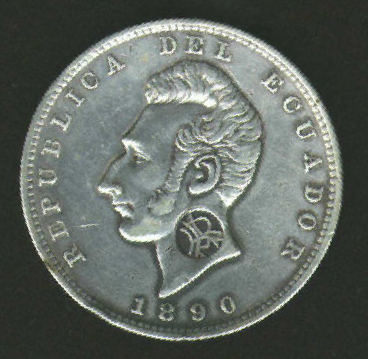
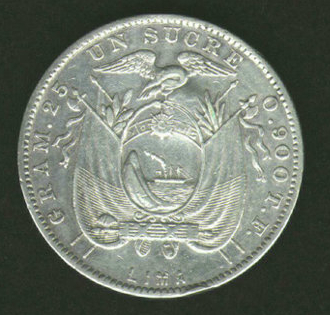
Legends start in many ways: some are based on provable facts but others have no documentary evidence with only pecuniary motives as the predicate. I believe that is the case with the "RA" countermarks allegedly done on Chatham Island in the Galapagos Archipelago (officially Archipiélago de Colón). In the case of the "Legend of Rogelio" the original, made-up legend is easily disproved. Among other factors there is no primary or even a secondary document that shows that Rogerio Alvarado had authorization from anyone to countermark coins for the Galapagos. And, "absence of evidence" is generally "evidence of absence". Therefore, it is reasonable to conclude that not only the legend but probably all of its offshoots are false.
The 11 page article and an additional 50 odd pages of notes is available on request from daleseppa@gmail.com.
Here's a short excerpt from the article's summary. Contact Dale at the address above for a full copy of the article. -Editor
Since no one has ever presented even a single primary document that substantiates the "RA" countermark I feel that is high time that we analyze the evidence, issue a death certificate and move on to other things. That legend has caused some collectors to pay rather high prices for coins with the countermarks alleged to be from the Galapagos Islands. In my opinion if one wishes to purchase an example as a curiosity that is fine as long as the price is not much more than the value of the host coin.
Some of the following has been covered in two articles published in the Numismatics International Bulletin to wit: "AR or RA Monogram Countermarks of the Galapagos Islands.", NI Bulletin, Volume 50, Nos. 11/12 and "RA Countermarks of the Galapagos Islands – Part I - Punch Types and Varieties", NI Bulletin, Volume 52, Nos. 1/2. I shall reiterate parts of those articles with additional material to substantiate my thesis.
The slow death of the legend began when the Krause/Mishler Standard Catalog of World Coins modified its Galapagos Islands listing to read "Without documentation, these pieces must be considered suspect". Eventually the listing was removed entirely from the KM catalogs.
When the "Legend of Rogelio" was completely debunked, some adherents for the legitimacy of the countermarks suggested the possibility that the "RA" countermarks of Rogelio Alvarado were really "AR" countermarks of Arturo Reed: the administrator of the Hacienda/Ingenio El Progreso on Chatham Island (now San Cristóbal) in the Galapagos. Reed was appointed in early 1904 shortly after the murder of Manuel J. Cobos- Villavencencio the original owner of the hacienda and kept that position only a few months. The timeline and various other factors have now completely disproven any possibility that Reed had anything to do with countermarked coins.
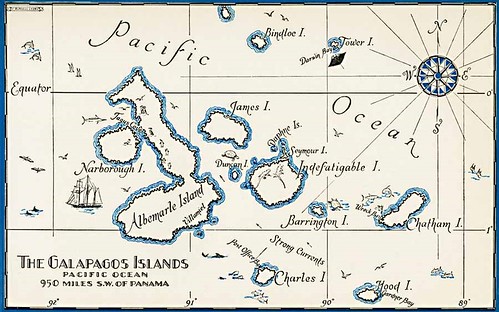
To read the complete Heritage lot description, see:
Ecuador: Galapagos Islands. Countermarked coinage, Ecuador 1890 Sucre counterstamped with RA, once believed to be the initials of Rog...
(https://coins.ha.com/itm/ecuador/world-coins/ecuador-galapagos-islands-countermarked-coinage-ecuador-1890-sucre-counterstamped-with-ra-once-believed-to-be-the-initials-of/a/332-11605.s)
To read the earlier E-Sylum articles, see:
WILLIAM JAMESON – AN UNLIKELY MINT DIRECTOR (https://www.coinbooks.org/v23/esylum_v23n14a33.html)
THE ELUSIVE NEW ENGLAND COUNTERMARK (https://www.coinbooks.org/v23/esylum_v23n15a31.html)
MORE ON THE ELUSIVE NEW ENGLAND COUNTERMARK
Bill Snyder writes:
"Back when Ken Bressett wrote about the Spanish NE countermarked coins, I had suggested the following to him (and later in a message to Louis Jordan)"
Here's the text of Bill's message. Thanks. -Editor
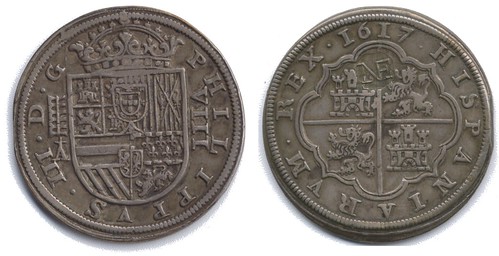
On page 307, the conclusion is reached that the "NE" countermark was an attempt to deceive. This is based on the fact that the Act of May, 1672 required that a Weight, as well as the NE initials, be placed on each coin tested.
I submit that there may be another interpretation.
When I read the second paragraph, (Crosby, page 80), beginning with 'Whereas peeces are of more . . ', it says that coins of "right allay, and due weight" will be stamped NE.
The third paragraph deals with underweight Spanish coins. It says "that peeces of eight vnder the weight of sixe shillings . . . . be impressed vpon the stamp how much each peece doth weigh in legible figures, wth the other letters on ye samew, & of the same Alloy.".
In order words, I suggest the weight was only required on underweight silver coins.
I had a similar question originally: "Is anyone familiar with a genuine example of a Spanish dollar countermarked with its weight... ?" Bressett concluded that the Act of 1672 "effectively removed any incentive for having those coins converted to Massachusetts shillings or counterstamped with any sort of markings." -Editor
To read the earlier E-Sylum article, see:
THE ELUSIVE NEW ENGLAND COUNTERMARK (https://www.coinbooks.org/v23/esylum_v23n15a31.html)
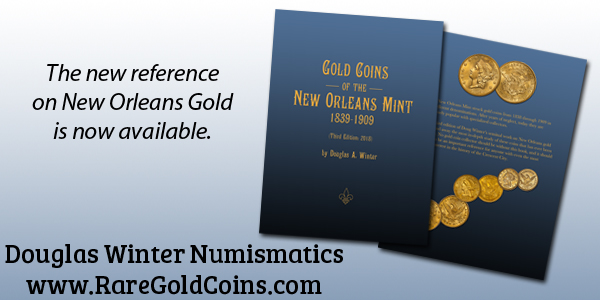
DUKE OF NORMANDY PIGEON DICKIN MEDAL
We've often discussed the Dickin Medal, a rare honor given to animals who serve in war zones. Most of the medals have gone to dogs, but awardees include horses, cats and also pigeons. The "Duke of Normandy" pigeon was honored for service during the D-Day landings. We missed the press release before the sale - the medal was auctioned this week at Dix Noonan Webb. Estimated at £6,000-8,000, it brought £22,000 (£27,280 with BP) to a phone bidder. -Editor
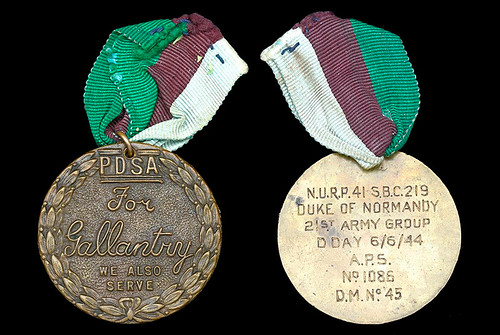
The emotive P.D.S.A. Dickin Medal for Gallantry - "The Animals' V.C." - awarded to the cockpigeon 'Duke of Normandy' for his gallantry on D-Day, 6 June 1944 will be offered by Dix Noonan Webb in their online/ live auction of Orders, Decorations, Medals and Militaria on Thursday, April 16, 2020 on their website www.dnw.co.uk. It is estimated to fetch £6,000-8,000.
Owned by Gaston Noterman, a naturalised Belgian and master organ builder living and working in Shepherd's Bush, London. ‘Duke of Normandy' was the first bird to arrive home with vital intelligence from behind enemy lines after an epic 26 hours and 50 minutes flight.
During the Second World War the Air Ministry maintained a pigeon section that used some 250,000 homing pigeons in a variety of roles, but primarily for sending messages. The Germans used snipers as well as trained falcons to attempt to stop the carrying of messages by pigeons from occupied Europe, and the keeping of pigeons was outlawed in German occupied Europe. However, during the events leading up to and during the D-Day landings pigeons successfully brought back many messages from occupied France on German preparations, defences, and fortifications, and such valuable intelligence, sent from behind enemy lines, undoubtedly saved many Allied lives.
The Duke of Normandy, a cock-pigeon, was born in 1941 and was volunteered by his owner to the Army Pigeon Service. After undergoing further training he was assigned to paratroopers of the Anglo-Canadian 21st Army Group, and was dropped behind enemy lines in June with a group of paratroopers tasked with silencing the powerful Merville Battery, which overlooked Sword Beach. As radio silence was crucial to the operations the Duke of Normandy was carried to take back the message that the battery had been taken. Of over 600 men who were dropped, only 150 managed to reach the target, but after fierce fighting the objective was taken with heavy loss. Having spent six days in close confinement in his basket, The Duke of Normandy was duly released and despite bad weather on the morning of his release, gales in the English Channel, and exceptionally heavy rain, the Duke of Normandy made it back to his loft after 26 hours and 50 minutes flying with the news of a successful operation.
The Duke of Normandy's time of 26 hours and 50 minutes was beaten by only a handful of other birds taking part in the D-Day landings, the record time being 23 hours and 4 minutes (although the distances flown varied depending upon the location of the pigeons' home loft). However, whilst these other birds had been released some time later, the Duke of Normandy gained the distinction of being the first bird to arrive home from behind enemy lines with news of the Normandy landings. He was presented with his Dickin Medal by Colonel H. Carkeet James, Governor of the Tower of London, in a televised ceremony at the B.B.C. Television Studios at Alexandra Palace in 1947.
Instituted by Maria Dickin, C.B.E., the founder of the People's Dispensary for Sick Animals, in 1943, the Dickin Medal has since been awarded on 71 occasions - 32 of them going to pigeons, 34 to dogs, 4 to horses, and 1 to a cat. The vast majority (and all those awards to pigeons) were granted in respect of acts of bravery in the Second World War, but more recently a number of awards have been made to Arms and Explosives Search Dogs of the Royal Army Veterinary Corps for their gallantry in Iraq and Afghanistan.
LORD ASHCROFT: GEORGE CROSS FOR HEALTH WORKERS
The Dickin medal is often called "the Animals' Victoria Cross", the equivalent of the Victoria Cross medal given to Britains for valor in battle. The George Cross is for similar acts of bravery by civilians.
The greatest collector of Victoria and George Cross medals is Lord Ashcroft, and he has issued a call to award the George Cross to front line medical workers in the coronavirus pandemic. Here's an excerpt from his April 14, 2020 article, an open letter to Prime Minister Boris Johnson, who is now recovering from COVID-19. -Editor
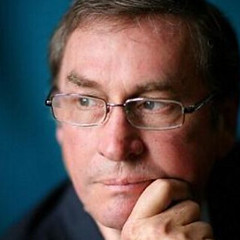 I am so relieved that you are out of hospital and out of danger, and I thought your generous words of praise for the NHS echoed the gratitude of the country towards the
astonishing dedication of frontline staff. You were spot-on to describe the NHS as the "country's greatest national asset", "the beating heart of this country" and "powered by
love".
I am so relieved that you are out of hospital and out of danger, and I thought your generous words of praise for the NHS echoed the gratitude of the country towards the
astonishing dedication of frontline staff. You were spot-on to describe the NHS as the "country's greatest national asset", "the beating heart of this country" and "powered by
love".
In fact, it is the subject of the NHS that I would like to address in my letter. As you know only too well from our discussions over the years, I have a passion for bravery, in general, and gallantry awards, in particular.
On September 24, the George Cross (GC) will mark its 80th anniversary. It is a wonderful gallantry medal, created early in the Second World War by George VI primarily to reward the courage of civilians engaged in rescue work and bomb disposal teams.
Relevant groups and charities, such as the Victoria Cross and George Cross Association, have been considering the best way of marking this landmark anniversary.
As the proud custodian of the world's largest collection of VCs and GCs and the author of six books on courage, I would like to make a humble suggestion to both you and the Queen for when you have your next audience together: would it not be fitting for Her Majesty to bestow a collective GC on the NHS for the incredible efforts of its staff in treating coronavirus patients?
The award could even be announced to mark the 80th anniversary of the GC.
It is true that gallantry medals are usually awarded to individuals but the rules and regulations relating to the GC allow for a collective award. In fact, it has happened on two previous occasions: to the island of Malta in 1942 and to the Royal Ulster Constabulary (RUC) in 1999.
In recent days, it has become apparent just how much the nation is already indebted to our frontline health workers and this great respect for the NHS will only grow over the coming weeks and months.
We are now nearly a month into the "lockdown" and the nation's weekly Thursday night clapping for the NHS gets louder and louder. In Manchester and other parts of the country, people have even painted roads with messages such as "Thank you NHS".
During this current emergency, many people from all walks of life have stepped up to the plate – but it has been our 1.3 million NHS workers who have borne the brunt of the burden.
I had initially thought that striking a new service medal, perhaps even called the Covid-19 Medal, specifically for those frontline workers, would be the best way of rewarding such commitment and public service. This might have been similar to the Ebola Medal awarded for humanitarian work in West Africa from 2014-16. However, such a service medal might still be given as well the collective GC.
To read the complete article, see:
Lord Ashcroft: Why our wonderful
NHS should be awarded a collective George Cross
(https://www.conservativehome.com/platform/2020/04/lord-ashcroft-why-our-wonderful-nhs-should-be-awarded-a-collective-george-cross.html)
Here's a follow-up piece from The Sun, which endorsed Ashcroft's idea. I added an image of a George Cross medal.
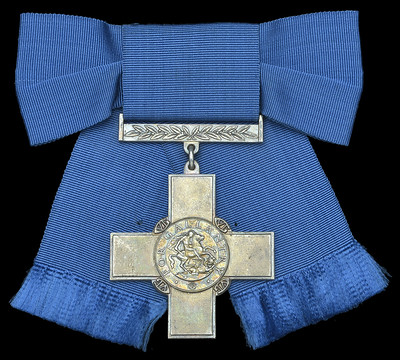 Like any controversial proposal, my suggestion got a mixed response.
Like any controversial proposal, my suggestion got a mixed response.
A former Labour councillor, who does not share my political views, emailed to say it was a "fantastic idea''. A commentator said I was a "genius".
Others said all NHS staff wanted was a pay rise and protective masks — and that medals were "worthless".
Let me explain my thinking. I am not saying that a medal — be it the collective GC or a newly-created award — is an alternative to looking after our NHS workers properly in terms of pay and equipment.
It would be in addition to full-heartedly supporting and protecting them.
I have long had a passion for bravery, largely because of my late father's involvement in the 1944 D-Day landings.
This has manifested itself in me championing our heroes (military and civilian), building the world's largest collection of Victoria Crosses (which are on public display) and writing six books on courage.
One book is called George Cross Heroes and highlights the award of the decoration to more than 160 recipients since its creation by George VI in 1940.
The GC is the Commonwealth's second ranking decoration for bravery after the VC.
It was created to acknowledge supreme bravery that — unlike the VC — did not take place in the heat of battle.
The decoration is awarded for "acts of the greatest heroism or of the most conspicuous courage in circumstances of great danger".
In the Blitz, it was awarded primarily to bomb-disposal men, civilian and military.
It has since been awarded for a variety of reasons. However, it is always to recognise not just service but real courage.
By the time this crisis is over, scores of doctors, nurses and frontline workers will have given their lives to treat patients. Thousands more will have risked survival.
When I wrote George Cross Heroes ten years ago, I chose for the cover a quotation from Thucydides, a general from the 5th century BC. It read: "The bravest are surely those who have the clearest vision of what is before them, glory and danger alike, and yet notwithstanding, go out to meet it."
This quote sums up my admiration for the NHS staff and other key workers.
To read the complete article, see:
HONOUR OUR HEROES NHS heroes should be awarded the George Cross medal for gallantry –
including those who made the ultimate sacrifice (https://www.thesun.co.uk/news/11406447/nhs-heroes-george-cross-medal-gallantry/)
To read earlier E-Sylum articles, see:
WWII HEROINE VIOLETTE SZABO'S MEDALS SOLD (https://www.coinbooks.org/esylum_v18n30a27.html)
BRITAINS REQUEST GEORGE CROSS FOR THAI DIVERS (https://www.coinbooks.org/v21/esylum_v21n28a31.html)

THE ELEMENTARY, MY DEAR WATSON MEDAL
Greg Ruby publishes The Fourth Garrideb, a blog about the numismatics of Sherlock Holmes. On April 14, 2020 he released an article about a medal he'd been seeking photos of. -Editor
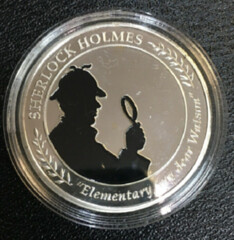
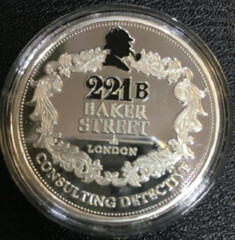
We've been trying to grab usable photos of this medal for over two years and have finally succeeded. We first became aware of this medal in April of 2018, so we believe this medal was struck in 2017 or earlier.
OBVERSE: SHERLOCK HOLMES (branch with leaves) / (right-facing profile of Holmes in cape & cap, with magnifying glass) / (branch with leaves) "Elementary, my dear Watson"
REVERSE: (bust of Holmes, facing right, with cap and pipe, overlaying a wreath) / 221B / BAKER / STREET / (line and triangle symbol) / LONDON / CONSULTING DETECTIVE
Brass, 40mm, Round
We believe this medal is marketed by the Sherlock Holmes Museum in London, as the reverse design features some of the same elements as other medals we believe were also sold by the Sherlock Holmes Museum... We really cannot be sure at this time, as their shop website has been being restocked continually since August of 2014 (with monthly checks by us) and we given up contacting them due to lack of responses. We give our reasons for why we are confident these medals are from the Sherlock Holmes Museum in the previous post.
We've also noticed the application of the black enamel on some of the design elements is uneven and spotty on the example we inspected on both sides. The Holmes profile on the obverse has some imperfections whey you inspect the coin very closely. and there are some very small drops on the reverse side.
Overall, it is a very attractive medal, however.
I agree - not a bad piece. Can anyone confirm that this was produced by the Sherlock Holmes Museum? -Editor
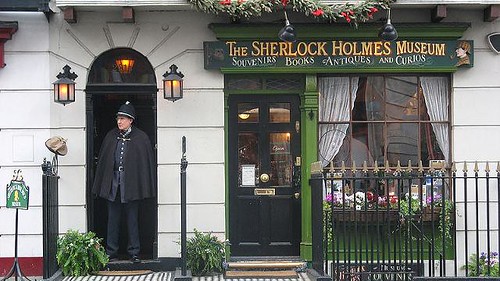
To read the complete article, see:
The Elementary, My Dear Watson Medal
(https://fourthgarrideb.com/2020/04/14/the-elementary-my-dear-watson-medal/)
To read the previous post, see:
Medals of London's Sherlock Holmes Museum
(https://fourthgarrideb.com/2017/04/04/medals-of-londons-sherlock-holmes-museum/)
THE RISE AND FALL OF THE VERMONT STATE BANK
In the what-could-possibly-go-wrong? department is this cautionary tale of the rise and fall of the Vermont State Bank. Here's an excerpt - see the complete article online for more. -Editor
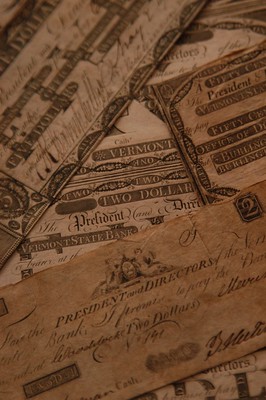 One day in 1808, Jireh Durkee walked into the Woodstock branch of the Vermont State Bank and demanded $9,000. But the bank's directors acted quickly to keep the man from
getting his hands on the cash. They tried to have him hauled into Windsor County Court to answer charges. And they attacked him personally, calling him "an evil-minded person" who
by his actions had attempted to "realize a filthy gain" and, worse, "diminish and destroy the resources of the state of Vermont."
One day in 1808, Jireh Durkee walked into the Woodstock branch of the Vermont State Bank and demanded $9,000. But the bank's directors acted quickly to keep the man from
getting his hands on the cash. They tried to have him hauled into Windsor County Court to answer charges. And they attacked him personally, calling him "an evil-minded person" who
by his actions had attempted to "realize a filthy gain" and, worse, "diminish and destroy the resources of the state of Vermont."
Durkee had entered the bank unarmed except for a stack of paper. But it was those papers that bank directors found so threatening. They were bills issued by the Woodstock bank itself, promising to pay the bearer their face value in hard cash, that is, in copper, silver or gold coins.
Vermont's first banks were chartered in Woodstock and Middlebury. Branches in Burlington and Westminster would follow. The Vermont law allowing banks only permitted banks owned by the state rather than by self-interested businessmen. That way, some argued, the bank would be "in the hands not of a corps of soulless individuals, but of the true friends of the people."
Lawmakers took a conservative approach with the banks. They allowed each to issue bills totaling no more than three times the deposits it had on hand. The rule was intended to make the banks more stable.
But rules only work if they are enforced. Some Vermonters worried that bank directors would do a poor job using their power wisely if they had no financial stake in the bank.
People, wanting a piece of the action, snapped up the bank bills. They lined up at banks to borrow money, promising to repay the loans at an agreed upon time. The paper currency proved so popular that banks began to run out of bills to loan. So they printed more.
By 1808, some banks were circulating bills worth more than seven times as much as the specie on hand, but the Legislature failed to act. The economy was strong, so why get in the way by enforcing regulations?
By printing more bills, banks hoped to make supply meet demand, but they were also devaluing the currency. The boom times, however, masked the economic reality.
Lawmakers tried various tacks to fix the problem. They empowered banks to crack down on customers who were late repaying their loans by threatening to have them jailed or seizing their property. To tighten the paper money supply and increase its value, the Legislature declared that state property taxes could be repaid using bank bills, which would then be taken out of circulation.
In 1812, with the United States slipping into war with Great Britain, Vermont, a likely invasion route, had to prepare its defenses. But the state had little money to spend. Most of its revenues were in nearly worthless paper.
That year, legislators admitted the obvious, the Vermont State Bank had been a failure, and ordered the branches closed. The state was getting out of the banking business; private ventures would fill the void.
Legislators ordered state bank branches, as one of their final acts, to collect their old bank bills, which had once seemed so vital to the state's well-being, and burn them.
To read the complete article, see:
Then Again: For state-owned bank, printing paper money was too
easy (https://vtdigger.org/2020/04/12/then-again-for-state-owned-bank-printing-paper-money-was-too-easy/)
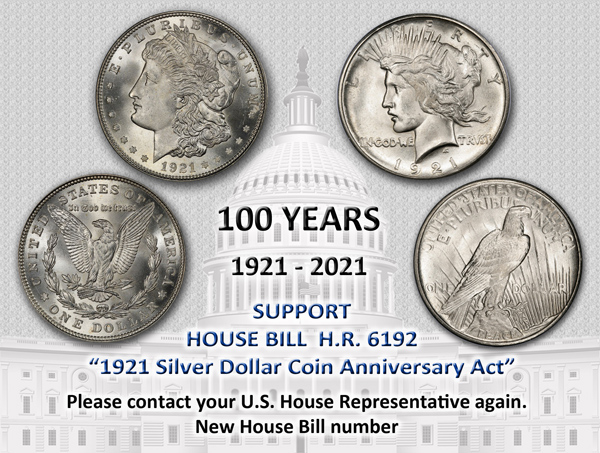
WILL CORONAVIRUS STIMULUS CHECKS BE COLLECTIBLE?
Last week I suggested that banknotes removed from the walls of a Georgia bar to pay out-of-work employees would make nice numismatic coronavirus souvenirs. Here's another one: physical checks for stimulus payments. While many Americans receive tax refund payments through electronic deposits direct to their bank accounts, people who don't will be getting a physical check made all the more interesting I suppose by the inclusion of the President's name on them. How many will be left uncashed? -Editor
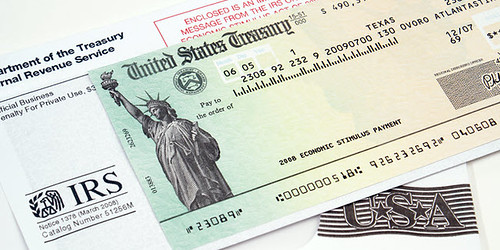
The Treasury Department has ordered President Trump's name printed on stimulus checks the Internal Revenue Service is rushing to send to tens of millions of Americans, a process that could slow their delivery by a few days, senior IRS officials said.
The unprecedented decision, finalized late Monday, means that when recipients open the $1,200 paper checks the IRS is scheduled to begin sending to 70 million Americans in coming days, "President Donald J. Trump" will appear on the left side of the payment.
It will be the first time a president's name appears on an IRS disbursement, whether a routine refund or one of the handful of checks the government has issued to taxpayers in recent decades either to stimulate a down economy or share the dividends of a strong one.
The checks will instead bear Trump's name in the memo line, below a line that reads, "Economic Impact Payment," the administration officials said.
The paper checks are scheduled to be issued at a rate of 5 million each week until September, starting with the lowest-income taxpayers.
Will any of the checks be worth more than their face value? Here's where a high-earning taxpayer could benefit. The payments are reduced for higher earners. Playing with a benefit calulator I learned that a single filer with a 2019 adjusted gross income of $98,990 could expect a stimulus check for the princely sum of one dollar. Lower incomes result in checks all the way up to the maximum of $1,200. So at what point would it be worthwhile to simply save the check as a souvenir? $10? $100? $250? -Editor
To read the complete article, see:
In unprecedented
move, Treasury orders Trump's name printed on stimulus checks
(https://www.washingtonpost.com/politics/coming-to-your-1200-relief-check-donald-j-trumps-name/2020/04/14/071016c2-7e82-11ea-8013-1b6da0e4a2b7_story.html)
To read the earlier E-Sylum article, see:
BAR PAYS EMPLOYEES WITH SOUVENIR BANKNOTES (https://www.coinbooks.org/v23/esylum_v23n15a42.html)
TORNADO CARRIES OLD CHECK STUB 90 MILES AWAY
It's not exactly numismatic, but this "bank note" (a check stub, actually) was found many miles from its likely origin following a tornado in South Carolina. -Editor
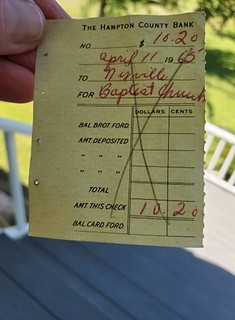 When Sherrie Sedgwick woke up to news of a tornado on Monday morning, she walked outside to make sure her home in Cross, South Carolina near Lake Moultrie hadn't
sustained any damage.
When Sherrie Sedgwick woke up to news of a tornado on Monday morning, she walked outside to make sure her home in Cross, South Carolina near Lake Moultrie hadn't
sustained any damage.
She was in luck. All was well.
But on her porch she found a 55-year-old note from a place not as lucky: The county where Monday's tornadoes were most deadly.
"I stepped out on the front porch and looked down, and there was that little receipt face-down," she said. "It wasn't torn. It wasn't crumpled. It was perfect. The first thing I saw was ‘Bank of Hampton County."
Hampton County, nearly 100 miles to the south, lost five residents in the storms on Monday morning. A tornado flattened several homes and scattered families' possessions up and down their streets.
When the storm came through and spared Sedgwick's home, it dropped a bank note from Hampton County Bank.
The issuer made out the check to the Nixville Baptist Church on April 11, 1965 — Palm Sunday.
"I had goosebumps," she said.
She posted a photo of the note on Facebook, and the post has been shared nearly 1,000 times. Even members of the Nixville Baptist Church have found the post and vowed to find its owner.
What about actual tornado-carried numismatic items? There must be stories of these - some part of someone's collection that got swept up and deposited miles away. -Editor
To read the complete article, see:
Monday's tornado left a note on an SC porch. It was written 90 miles away ... in 1965
(https://www.islandpacket.com/news/local/article242002436.html)

THE CASE FOR ELECTRONIC CASH
Pablo Hoffman of New York City passed along this Technology Review article on cash vs. electronic currencies. Thanks. -Editor
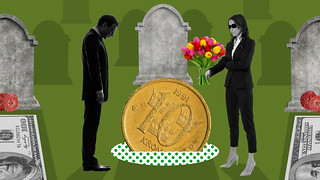 Think about the last time you used cash. How much did you spend? What did you buy, and from whom? Was it a one-time thing, or was it something you buy regularly?
Think about the last time you used cash. How much did you spend? What did you buy, and from whom? Was it a one-time thing, or was it something you buy regularly?
Was it legal?
If you'd rather keep all that to yourself, you're in luck. The person in the store (or on the street corner) may remember your face, but as long as you didn't reveal any identifying information, there is nothing that links you to the transaction.
This is a feature of physical cash that payment cards and apps do not have: freedom. Called "bearer instruments," banknotes and coins are presumed to be owned by whoever holds them. We can use them to transact with another person without a third party getting in the way. Companies cannot build advertising profiles or credit ratings out of our data, and governments cannot track our spending or our movements. And while a credit card can be declined and a check mislaid, handing over money works every time, instantly.
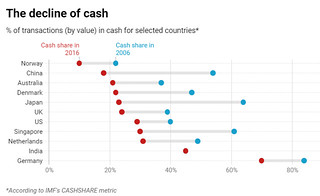 We shouldn't take this freedom for granted. Much of our commerce now happens online. It relies on banks and financial technology companies to serve as middlemen.
Transactions are going digital in the physical world, too: electronic payment tools, from debit cards to Apple Pay to Alipay, are increasingly replacing cash. While notes and
coins remain popular in many countries, including the US, Japan, and Germany, in others they are nearing obsolescence.
We shouldn't take this freedom for granted. Much of our commerce now happens online. It relies on banks and financial technology companies to serve as middlemen.
Transactions are going digital in the physical world, too: electronic payment tools, from debit cards to Apple Pay to Alipay, are increasingly replacing cash. While notes and
coins remain popular in many countries, including the US, Japan, and Germany, in others they are nearing obsolescence.
This trend has civil liberties groups worried. Without cash, there is "no chance for the kind of dignity-preserving privacy that undergirds an open society," writes Jerry Brito, executive director of Coin Center, a policy advocacy group based in Washington, DC. In a recent report, Brito contends that we must "develop and foster electronic cash" that is as private as physical cash and doesn't require permission to use.
The central question is who will develop and control the electronic payment systems of the future. Most of the existing ones, like Alipay, Zelle, PayPal, Venmo, and Kenya's M-Pesa, are run by private firms. Afraid of leaving payments solely in their hands, many governments are looking to develop some sort of electronic stand-in for notes and coins. Meanwhile, advocates of stateless, ownerless cryptocurrencies like Bitcoin say they're the only solution as surveillance-proof as cash—but can they be feasible at large scales?
We tend to take it for granted that new technologies work better than old ones—safer, faster, more accurate, more efficient, more convenient. Purists may extol the virtues of vinyl records, but nobody can dispute that a digital music collection is easier to carry and sounds almost exactly as good. Cash is a paradox—a technology thousands of years old that may just prove impossible to re-create in a more advanced form.
To read the complete article, see:
An elegy for cash: the technology we might never replace
(https://www.technologyreview.com/2020/01/03/131029/an-elegy-for-cash-the-technology-we-might-never-replace/)
LOOSE CHANGE: APRIL 19, 2020
Here are some additional items in the media this week that may be of interest. -Editor
The Scrip Notes of Greenfield Mills, MD
John Sandrock's web site, The Currency Collector, was a Featured Web Site in The E-Sylum in 2016. I rediscovered it this week thanks to a mention in the April 14, 2020 (Volume V, Number 43) of the News & Notes email newsletter from the Society of Paper Money Collectors. The site's topics include Chinese coins and banknotes, siege notes, emergency money and more. For U.S. collectors, here's a well-researched article on the early scrip notes of Greenfield Mills, near Frederick, MD. -Editor

In the 1830s Greenfield Mills was a thriving farm community, replete with its own bank which issued scrip notes for the use of its citizens. Little evidence of Greenfield Mills past exists today, except for the bank notes themselves. When I started my search no one I questioned had ever heard of the place, nor could anyone tell me where it had once been located. A little detective work would ultimately enable the author to determine the answer to this mystery and to learn how the bank failed and why.
To read the complete article, see:
THE SCRIP NOTES OF GREENFIELD MILLS AND RELATED MATTERS
(http://www.thecurrencycollector.com/pdfs/The_Scrip_Notes_of_Greenfield_Mills.pdf)
Summary: Emperor Norton Treasure Hunt Material
John Lumea of the Emperor Norton Trust published an article that pulls together and amplifies on the San Francisco Chronicle Emperor Norton Treasure Hunt material discussed earlier. -Editor
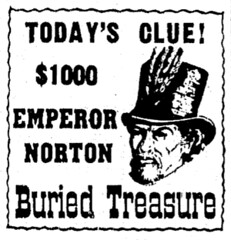 To read the complete article, see:
To read the complete article, see:
Of Medals and Medallions: Four Artifacts of
Mid-20th-Century "Norton Culture" (http://emperornortontrust.org/blog/2020/4/17/of-medals-and-medallions-four-artifacts-of-mid-20th-century-norton-culture)
To read the earlier E-Sylum articles, see:
THE 1953 EMPEROR NORTON MEDALS (https://www.coinbooks.org/v23/esylum_v23n14a21.html)
NOTES FROM E-SYLUM READERS: APRIL 12, 2020 : Grand Order of the West Knight Companion Medal
(https://www.coinbooks.org/v23/esylum_v23n15a19.html)
A Civil War Love Story
Just for fun here's a completely non-numismatic story from Newspapers.com that will interest history buffs and romantics alike. But is it true, or fake news? -Editor
 Occasionally we come across an old newspaper story that is so amazing, we can't help but wonder if it's really true. This story about Civil War soldier Otis H. Burton
seems to fall into that category. After a little fact-checking, however, all available records seem to support this sweet love story. With all the heavy news lately, sit back and
enjoy this 19th-century tale with miraculous twists and a happy ending!
Occasionally we come across an old newspaper story that is so amazing, we can't help but wonder if it's really true. This story about Civil War soldier Otis H. Burton
seems to fall into that category. After a little fact-checking, however, all available records seem to support this sweet love story. With all the heavy news lately, sit back and
enjoy this 19th-century tale with miraculous twists and a happy ending!
To read the complete article, see:
Reunited Against All Odds: A Civil War Love Story
(https://blog.newspapers.com/reunited-against-all-odds-a-civil-war-love-story/)
Shakespearean Insults
Fiction is often more interesting anyway. And for those who prefer history of an earlier time and place, you may enjoy this compendium of Shakespearean Insults. Add a few to your bag of tricks - and don't forget to try the Build Your Own Shakespearean Insult generator, you spongy rump-fed varlets! -Editor
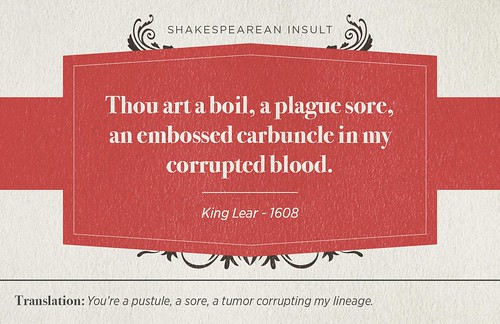
In addition to appreciating his literary contributions, Shakespeare enthusiasts understand and enjoy the snarky humor that is embedded in his work. His writing shows the power of language for its ability to make a statement and pack a punch. To celebrate Shakespeare's 454th birthday, we've compiled the best insults from some of his most famous works into a Shakespearean insult generator.
To read the complete article, see:
Shakespearean Insults for Every Situation (https://www.invaluable.com/blog/shakespearean-insults/)
The Toilet-Paper Shortage of 1973
This isn't the first toilet paper panic. Back in the days of the energy shortage an offhand joke kicked off a nationwide toilet-paper buying spree. Check out the video. -Editor
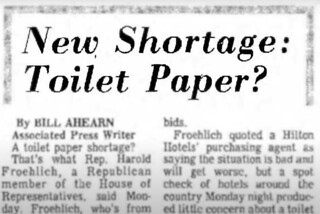 It started with an unsubstantiated rumor. "You can laugh now," Johnny Carson said on The Tonight Show on December 19, 1973, "but there is an acute shortage of
toilet paper." There wasn't—but it didn't matter. The broadcast sent America into a mass panic. Millions of shoppers swarmed into grocery stores and began hoarding toilet paper.
Ex nihilo, a shortage was born. The Scott Paper Company urged people to stop panic-buying the product. Nevertheless, for four months, toilet paper—absent from shelves—was bartered
for, traded, and even sold on the black market.
It started with an unsubstantiated rumor. "You can laugh now," Johnny Carson said on The Tonight Show on December 19, 1973, "but there is an acute shortage of
toilet paper." There wasn't—but it didn't matter. The broadcast sent America into a mass panic. Millions of shoppers swarmed into grocery stores and began hoarding toilet paper.
Ex nihilo, a shortage was born. The Scott Paper Company urged people to stop panic-buying the product. Nevertheless, for four months, toilet paper—absent from shelves—was bartered
for, traded, and even sold on the black market.
"I was completely blown away by the whole tale," the filmmaker Brian Gersten told me. His short documentary The Great Toilet Paper Scare, premiering on The Atlantic today, details the frenzy that ensued following Carson's remarks. "I found newspaper reports from every corner of the U.S. that had firsthand accounts of the chaos," Gersten said. He excerpted interviews and re-created them with absurdist animation for the film. "These scenes might seem a little hyperbolic," Gersten said, "but all of this stuff did actually happen, and people actually said those things."
To read the complete article, see:
What Misinformation Has to Do With Toilet Paper
(https://www.theatlantic.com/video/index/608209/toilet-paper-shortage/)
Collecting Russian Znachki
In the other-things-people-collect department is this Atlas Obscura article about Russian znachki (lapel pins). -Editor
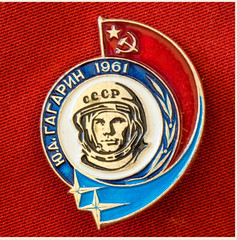 IN 1981, ROBERT MOELLER TRAVELED to Moscow to visit his wife, a graduate student who was doing research there, and she handed him some Soviet rubles. Maybe he could pick
up a warm fur hat, she said, or perhaps some of the "silly Soviet pins" for sale all over town. Called znachki in Russian, these tiny works of art honored all kinds of
subjects, from Soviet cities and Communist Party anniversaries to the space dog Laika and the latest Lada sedan.
IN 1981, ROBERT MOELLER TRAVELED to Moscow to visit his wife, a graduate student who was doing research there, and she handed him some Soviet rubles. Maybe he could pick
up a warm fur hat, she said, or perhaps some of the "silly Soviet pins" for sale all over town. Called znachki in Russian, these tiny works of art honored all kinds of
subjects, from Soviet cities and Communist Party anniversaries to the space dog Laika and the latest Lada sedan.
Moeller, now a retired professor of European history, watched with fascination as pin collectors, mostly middle-aged men, approached the huge displays of znachki at the GUM department store by Red Square. "Each pin had a discrete number; they'd go in with the ones they were missing and make their orders from there," he says. Soon he, too, was hooked: "Here was a piece of history that you could pin to your lapel, material culture that embodied the past and celebrated the present."
To read the complete article, see:
The U.S.S.R.'s Hottest Collectibles Are All Over eBay and Instagram
(https://www.atlasobscura.com/articles/soviet-pin-collectors)
To read earlier E-Sylum articles, see:
NEWMAN PORTAL ADDS ALASKAN ZNACHKI BULLETIN (https://www.coinbooks.org/v21/esylum_v21n04a05.html)
SOVIET ERA RUSSIAN ZNACHKI (https://www.coinbooks.org/v21/esylum_v21n04a30.html)
Most Valuable Artwork Lost on the Titanic
Not numismatic, but of interest to the collector in all of us: this article discusses a valuable painting and other collectible rarities lost with the Titanic. -Editor
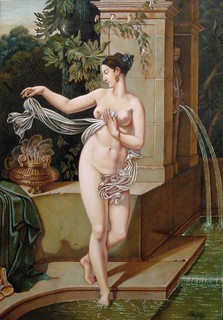 Over 100 years since the sinking, the story of the Titanic continues to captivate the masses with its ambitious beginnings and tragic demise. When the ocean liner
departed for its maiden voyage in 1912, it was the largest ship to ever take to the seas. Of the 1,300 passengers, about 319 passengers boarded in first class, a rolodex of
European aristocracy and American millionaires, and with them came a host of treasures, from artwork to motorcars. But the most expensive carry-on item was brought abroad by the
29-year-old Swedish scion of a wood pulp fortune, Mauritz Håkan Björnström-Steffansson. In his possession was the oil masterpiece La Circassienne au Bain by the French
Neoclassical master Merry-Joseph Blondel.
Over 100 years since the sinking, the story of the Titanic continues to captivate the masses with its ambitious beginnings and tragic demise. When the ocean liner
departed for its maiden voyage in 1912, it was the largest ship to ever take to the seas. Of the 1,300 passengers, about 319 passengers boarded in first class, a rolodex of
European aristocracy and American millionaires, and with them came a host of treasures, from artwork to motorcars. But the most expensive carry-on item was brought abroad by the
29-year-old Swedish scion of a wood pulp fortune, Mauritz Håkan Björnström-Steffansson. In his possession was the oil masterpiece La Circassienne au Bain by the French
Neoclassical master Merry-Joseph Blondel.
On the Titanic, Björnström-Steffansson befriended Hugh Woolner and the two were in the first class smoking lounge when the ship hit the fated iceberg. The two assisted others into lifeboats and just as the ship was about to completely submerge, they jumped into one of the last lifeboats, Lifeboat D, before they were rescued by RMS Carpathia, which brought the saved passengers to New York.
Survivors heaped claims upon the White Star Line for loss of life and possessions. Björnström-Steffansson filed for $100,000 (over $2.5 million today) for the lost painting, the single largest claim in the $6 million worth of claims (about $150 million today). However, White Star Line settled for just $664,000 (about $17 million today) so it is unlikely Björnström-Steffansson received the full amount.
Although the Blondel painting was considered the most valuable masterpiece aboard, other noteworthy works perished in the disaster, including a signed portrait of Italian nationalist Giuseppe Garibaldi and a bejeweled edition of the Rubaiyat, a Persian book of poetry dating to the 11th century.
To read the complete article, see:
The Most Valuable Artwork Lost on the Titanic
(https://www.barnebys.com/blog/heres-the-story-behind-la-circassienene-au-bain-an)
FEATURED WEB SITE: COIN DATE CONVERTER
This week's Featured Web Site is suggested by Chip Howell, who writes:"Scott Ichniowski posted a website in our club forum, that translates Japanese regnal dates, based on the actual characters on the coin."
Thanks! Very useful. It converts many types of dates, including Muslim, Thai, Hebrew, Iranian and Burmese.
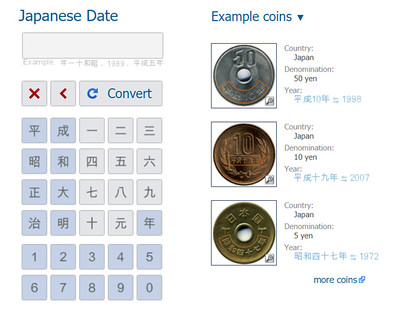
http://dateconverter.net/japanese/?hl=en
To read the earlier E-Sylum article, see:
NOTES FROM E-SYLUM READERS: APRIL 12, 2020 : Japanese Coin Dates
(https://www.coinbooks.org/v23/esylum_v23n15a19.html)

